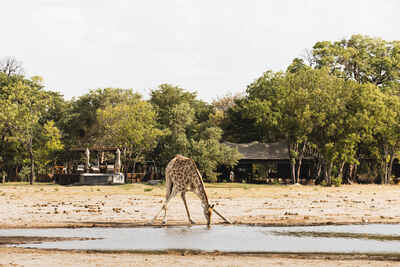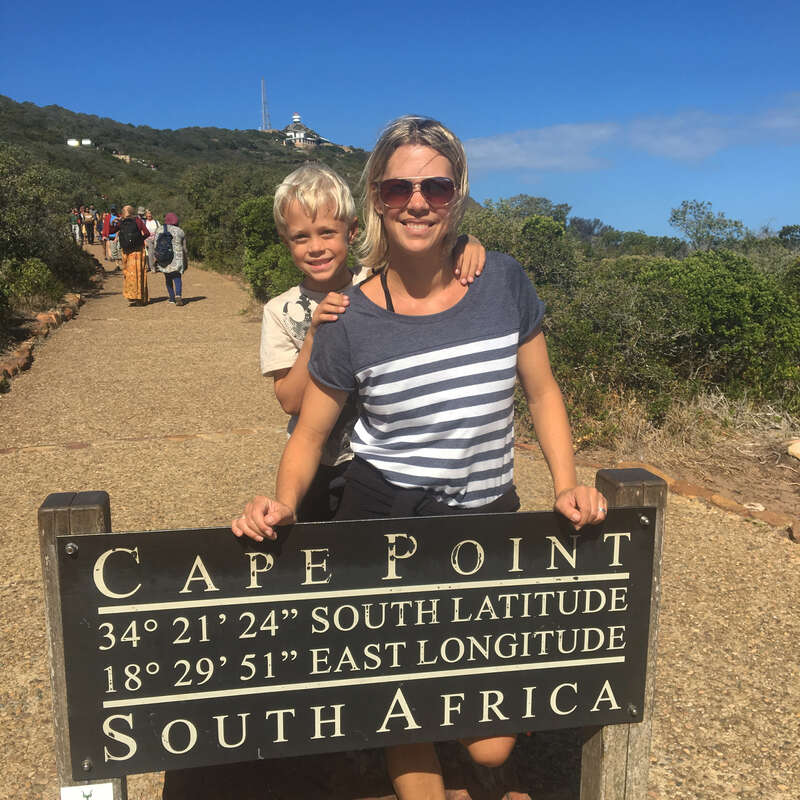About Little Makalolo Camp
Overlooking a waterhole regularly frequented by wildlife, Little Makalolo Camp sits in a teak forest in the ...
... eastern region of Zimbabwe’s Hwange National Park. It's a small, traditional-style camp in a remote and private concession area, making the game viewing relatively exclusive.
Little Makalolo does a great job of combining high standards of service with quality facilities, enhancing the canvas construction of a classic bushcamp with welcome contemporary features. Its activities are varied and its guides highly professional; walking in this area is a highlight not to be missed.
Our view
Little Makalolo does a great job of combining high standards of service with quality facilities, enhancing the canvas construction of a classic bushcamp with welcome contemporary features. Its activities are varied and its guides highly professional; walking in this area is a highlight not to be missed.
Accommodation
6 tented chalets
Children
Best for 16+
Open
All year
Activities

4WD Safari

Birdwatching

Guided walking safari

Night drive

Private activities

Sleeping under the stars
Traveller reviews of Little Makalolo Camp
24 real, un-edited reviews from Expert Africa's travellers.
Arrived 13 Apr 2024, 3 nights
"Little Makalolo Camp review"
Overall rating: Excellent
Arrived 13 Apr 2024, 3 nights
"Little Makalolo Camp review"
Overall rating: Excellent
Arrived 14 Oct 2023, 4 nights
"Little Makalolo Camp review"
Overall rating: Excellent
Arrived 13 Oct 2023, 3 nights
"Little Makalolo Camp review"
Overall rating: Excellent
Arrived 30 Aug 2023, 2 nights
"Little Makalolo Camp review"
Overall rating: Good
Arrived 12 Aug 2022, 3 nights
"Little Makalolo Camp review"
Overall rating: Excellent
Arrived 9 Nov 2019, 3 nights
"A superb camp"
Overall rating: Excellent
Arrived 1 Jul 2019, 3 nights
"Excellent Safari & Service at Little Makalolo"
Overall rating: Excellent
Arrived 1 Jul 2019, 3 nights
"Little Makalolo Camp review"
Overall rating: Excellent
Arrived 9 Jul 2016, 3 nights
"Luxury camp in Hwange"
Overall rating: Excellent
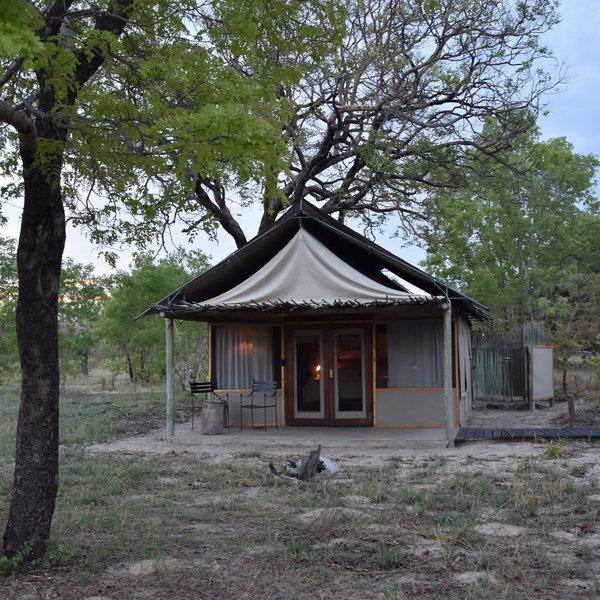
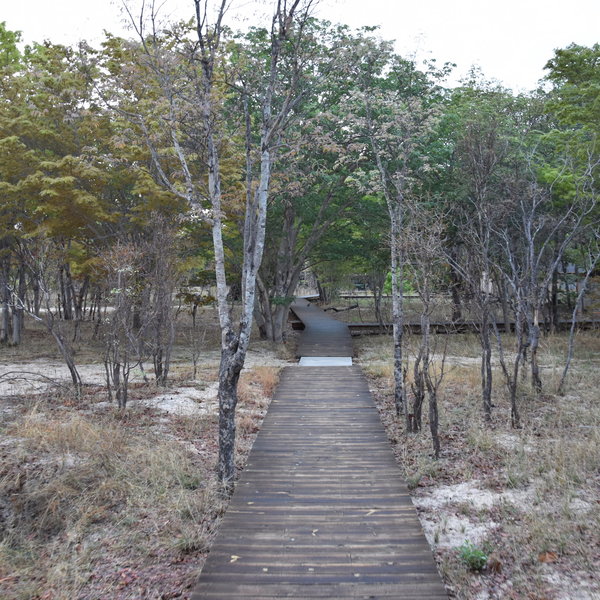
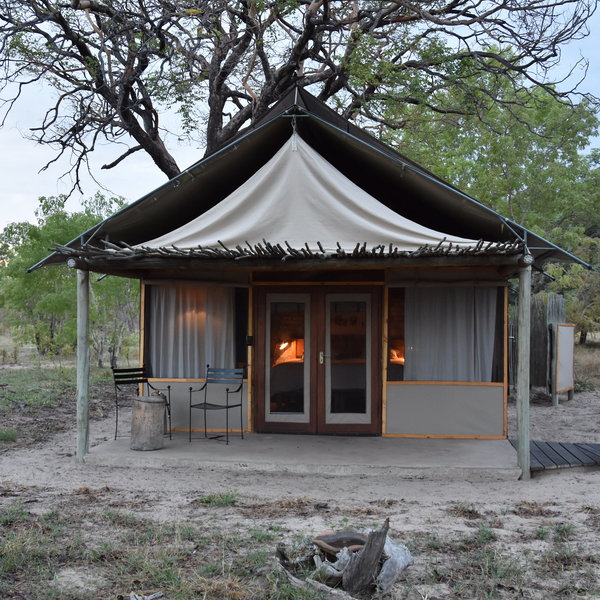
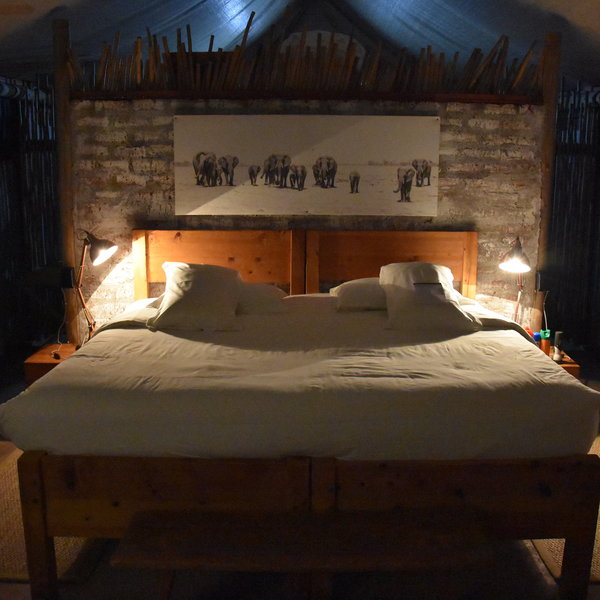
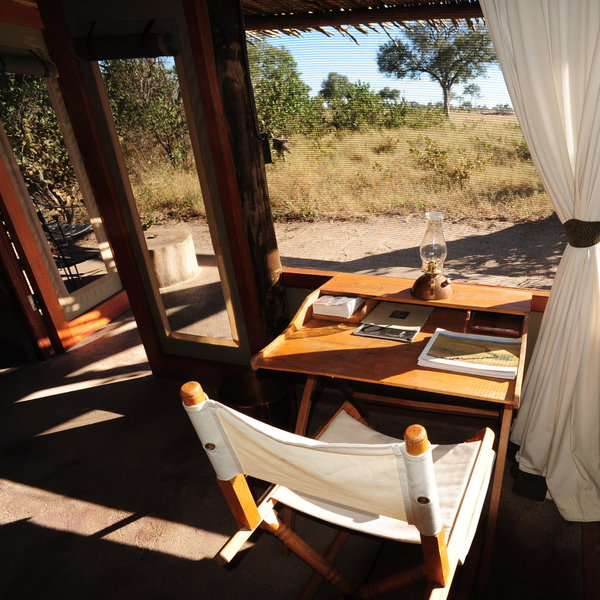
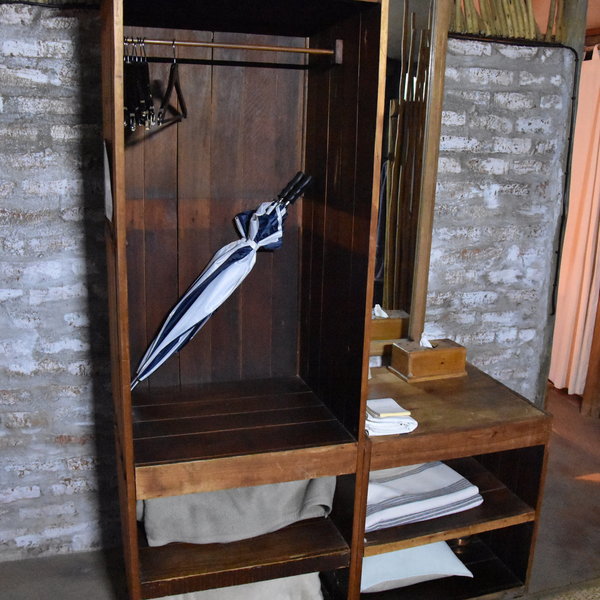
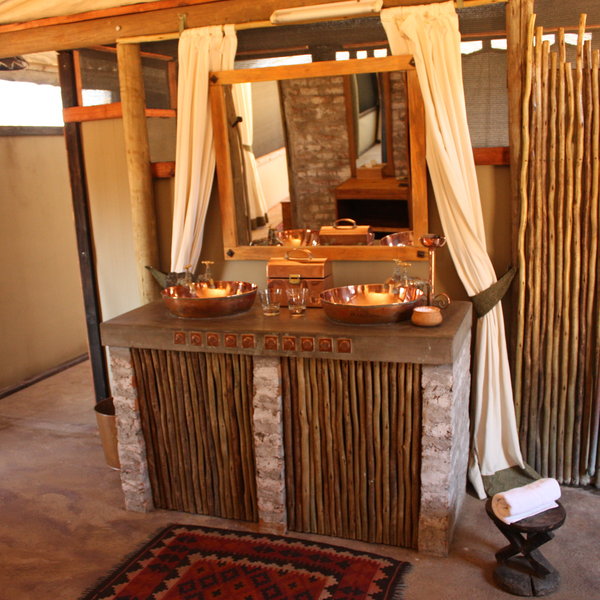

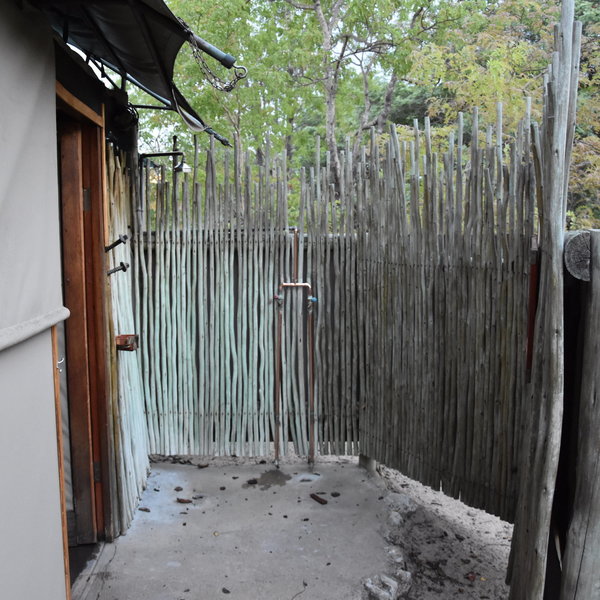
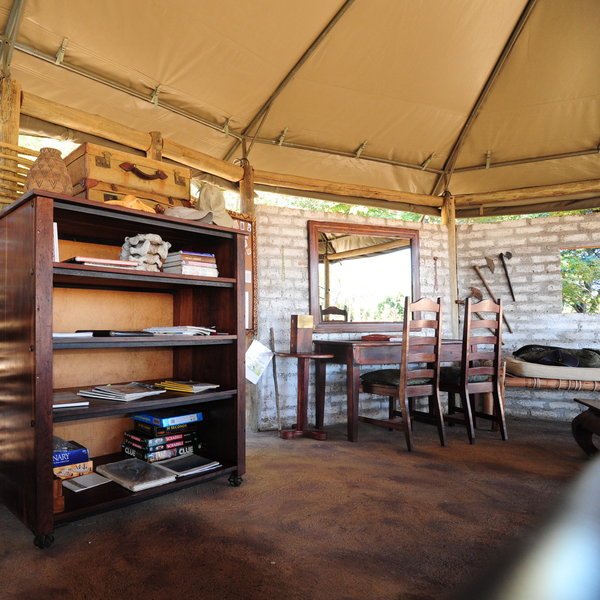
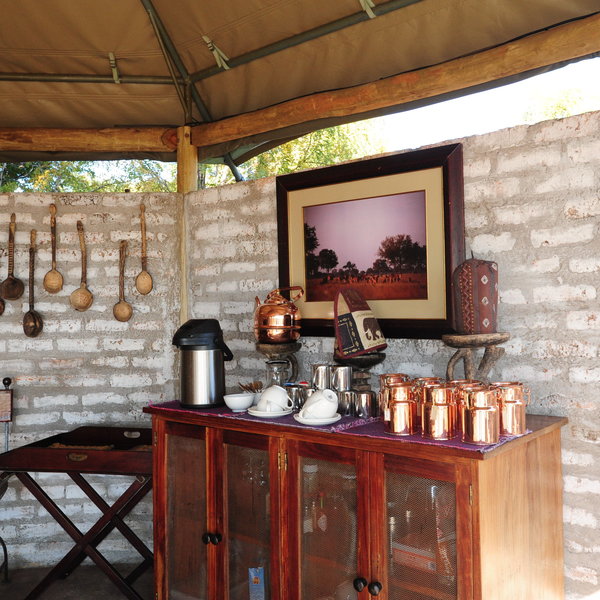
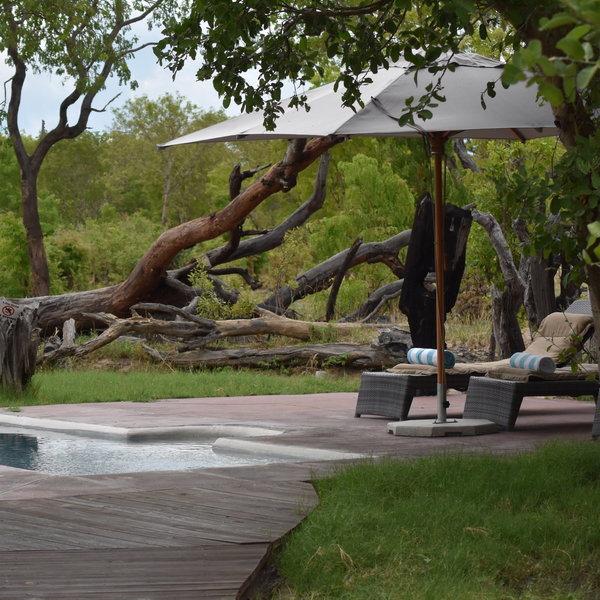
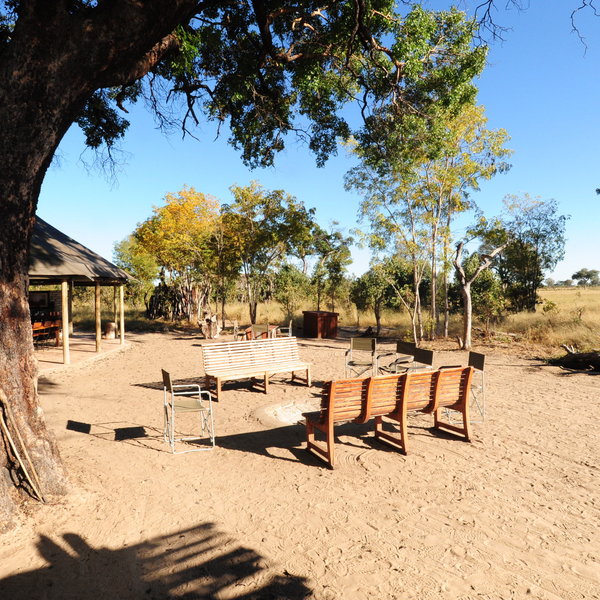
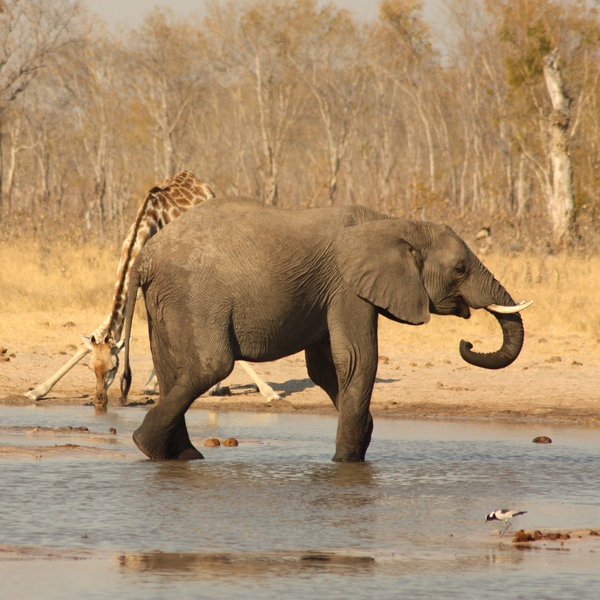
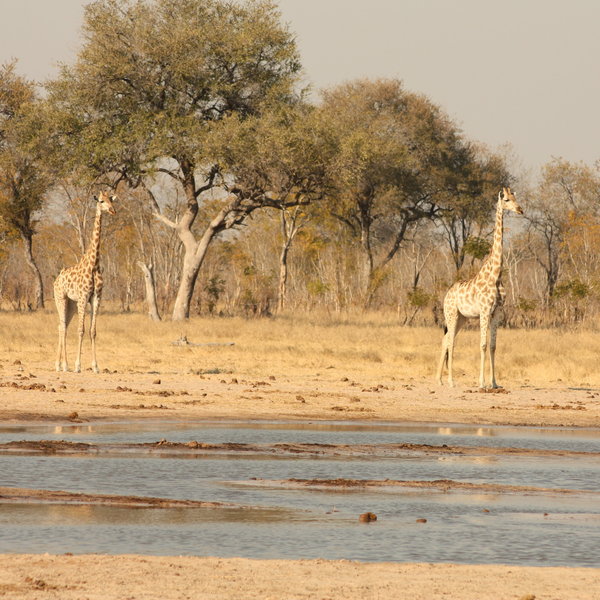
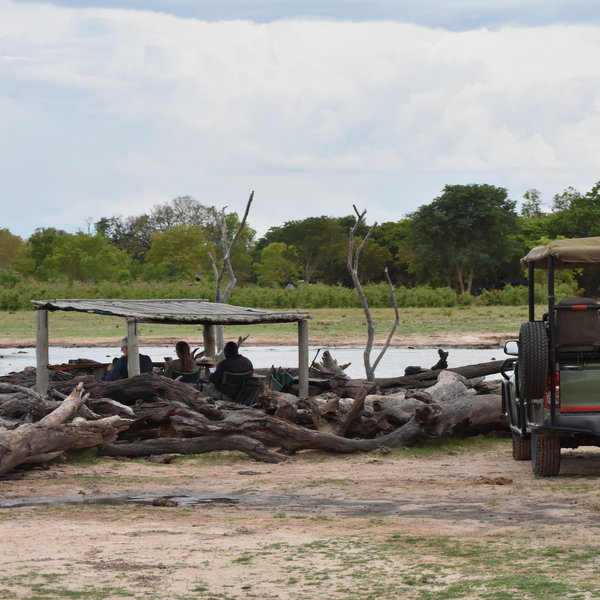
Expert Africa's gallery
When we travel we take lots of photos ourselves to give you a real and un-edited view of the safaris. See our 28 pictures of Little Makalolo Camp to get the candid view.
View galleryLittle Makalolo Camp: Our full report
Overlooking a waterhole regularly frequented by wildlife, Little Makalolo Camp sits in a teak forest in the ...
... eastern region of Zimbabwe’s Hwange National Park. It's a small, traditional-style camp in a remote and private concession area, making the game viewing relatively exclusive.
Not to be confused with Makalolo Plains Camp, which is now used solely for groups, Little Makalolo has a couple more sister properties within its large relatively exclusive concession within Hwange: the simpler, more rustic Davison’s Camp and the smarter and more luxurious Linkwasha Camp.
Little Makalolo has just six tented chalets all connected to the main area by slightly raised wooden walkways. Each chalet is a very airy, timber-framed structure with mesh windows that allow a breeze to flow through during the day, and roll-down canvas flaps that shield against the cold, wind and rain when necessary.
The chalets are simple but tastefully decorated with a variety of authentic wood and brass fittings adorning the walls and tables. Concrete flooring helps to regulate the temperature during the day while a good spread of rugs adds warmth at night. Large double-doors at the front of each chalet open onto a veranda, shaded by a wooden slotted-frame ceiling beneath a canvas roof. Two metal chairs give good views through a clearing towards the waterhole, and a tree stump serves as a novel table.
Inside, each chalet is dominated by a large double or twin beds, but you will also find a fan, and a writing table that looks out onto the surrounding bush. The en-suite bathroom is separated from the bedroom by a brick partition wall enlivened by black-and-white prints of Hwange’s wildlife. The bathroom itself is complete with indoor and outdoor showers, his and hers copper washbasins and a flush toilet set in an adjoining cubicle with canvas walls.
Behind the scenes, solar power plays an important role at Little Makalolo. Each of the chalets has a modern solar unit, which combines thermal rods for heating water with photovoltaic cells for charging the chalet's electricity storage cells. Apart from the environmental benefits that this brings, it also helps to enhance the aesthetic value of the camp, as it minimises the need for a noisy generator.
Shortly after our last visit in November 2017, there were plans to renovate the main area, whose lounge area was furnished with comfortable seating and chairs, and a small library complete with magazines, books and board games. In the adjacent open-sided dining area, with its large communal table, guests can help themselves to tea and coffee throughout the day.
An outdoor firepit surrounded by chairs proved a popular gathering place for guests to warm themselves with a hot drink around the fire first thing in the morning, or perhaps with something stronger before or after dinner. Little Makalolo also has a small plunge pool with some deck chairs that provides a great place to cool off during the hot afternoon.
Safari activities from Little Makalolo Camp centre around 4WD game drives and walking safaris with top professional guides. Game drives take place in the morning, beginning early, stopping for coffee mid-morning and returning in time for brunch. Guests on a morning walk depart around sunrise, normally being driven out of camp for about 15 minutes before a two–three-hour walk, and returning in time for brunch. On a previous stay during a fascinating walk with our guide, we were excited to find black rhino tracks early on and although we didn't spot the rhino itself, the tracking was great fun. We also managed to get within 100m of a loan male sable antelope before it noticed us and dashed off into thicker bush.
Evening 4WD safaris begin in the late afternoon and stop for sundowners before using a spotlight on the return to camp. On the same visit to Little Makalolo we came across a huge herd of buffalo and watched as a pride of lion, just visible on the edge of the treeline, began to move towards the herd; sitting in the pitch black as the buffalo became increasingly aware of the lion's presence was an unforgettable experience. The next morning we returned to find an old male had fallen prey to the lions and every member of the pride, from cubs to adults, was eating its fill.
There are also many hides and waterholes in the Makalolo area, including a “tree-house” hide above a waterhole at the front of Makalolo Plains Camp, and a “'log-pile” hide beside the waterhole in front of Little Makalolo. This can seat up to four people (including your guide) and allows you to get very close to wildlife (particularly elephants) at the waterhole. On one visit to Little Makalolo, we were sprayed with mud by an elephant that was only a few metres away – very exciting!
About 90 minutes' drive from Little Makalolo, just outside the national park, is the small town of Ngamo where there are two community-run schools. The owners of Little Makalolo are heavily involved in community projects to try and improve the lives of children in this area, illustrating the positive impact that tourist dollars are having on the people of Zimbabwe. Guests at Little Makalolo can visit the town and see some of these projects, which include a borehole to provide children and teachers with fresh drinking water, the re-thatching of school buildings, and the provision of basic first-aid kits and health care. Such visits are of course completely optional and are usually run in place of usual wildlife watching activites, but may provide an interesting change of scenery for those who would normally see only the wildlife of Hwange, and little of the local people.
Activities
4WD Safari
Birdwatching
Guided walking safari
Night drive
Private activities
Sleeping under the stars
Families & children
- Attitude towards children
- Little Makalolo Camp welcomes children aged seven years and over. Note, however, that the camp usually insists that guests with children under 16 hire a private vehicle for game drives at extra cost.
- Property’s age restrictions
- Little Makalolo Camp welcomes children aged seven years and over. Children under the age of about 16 are unlikely to be allowed on walking safaris.
- Special activities & services
- None
- Equipment
- The camp doesn't have any cots, high-chairs or special equipment for children.
- Generally recommended for children
- We don't recommend Little Makalolo Camp for children under the age of about 16. Activities for youngsters at the camp, between guided safari activities, are very limited.
- Notes
- This is an open safari camp and dangerous animals are likely to pass through; children must be supervised by a parent at all times.
Food & drink
- Usual board basis
- Full Board & Activities
- Food quality
- The food at Little Makalolo is generally of a very good standard, and we were pleased to find this still the case on our visit in November 2017. Most meals are served buffet style around a large table.
In the early morning, a light breakfast of cereals, hot porridge and toast cooked over the fire, as well as tea and coffee, is enjoyed around the campfire before setting off for your first activity of the day.
Brunch is usually served after the morning activity, but on this trip the kitchen prepared us a packed lunch to take with us as we moved to our next camp. On a previous visit we had fish and chips with quiche and a selection of salads.
After a relaxing siesta, high tea consists of both sweet and savoury snacks such as freshly baked chocolate cake and mini pizzas. In the summer months iced coffee or tea are served along with regular coffee and tea.
For dinner, on our return from the evening activity, we had an unusual pear and courgette soup to start, followed by a braai (barbecue) of beef and pork belly served with pap (a traditional staple, rather like polenta), baked potatoes and seasonal vegetables. The meal was finished off with a rich Amarula and white-chocolate mousse. A more typical main course might be along the lines of chicken cordon bleu with butternut squash and roast potatoes, which we enjoyed on a previous visit. - Dining style
- Mixture of group dining and individual tables
- Dining locations
- Indoor and Outdoor Dining
- Further dining info, including room service
- Private dining is available on request.
- Drinks included
- Soft drinks, beers, and most wines and spirits are included in the rates, but high-end liqueurs, champagne and premium wines and spirits are not.
To help reduce the waste of plastic bottles, each guests is supplied with their own water bottle on arrival. This can be refilled with tap water, which is safe to drink here.
Our travellers’ wildlife sightings from Little Makalolo Camp
Since mid-2018, many of our travellers who stayed at Little Makalolo Camp have kindly recorded their wildlife sightings and shared them with us. The results are below. Click an animal to see more, and here to see more on our methodology.

100% success

100% success

100% success

100% success

100% success

100% success

100% success

90% success

90% success

60% success

50% success

50% success

38% success

22% success

13% success

11% success

0% success

0% success
Getting there
- Location
- Hwange National Park, Zimbabwe
- Ideal length of stay
- We would recommend Little Makalolo as a great place to spend 3–4 nights.
- Directions
- Travellers can reach Little Makalolo by road or air. The road transfer from Victoria Falls takes 3–4 hours and includes considerable time on a game drive within Hwange National Park. Alternatively, take a light aircraft to Makalolo airstrip followed by a short 4WD drive to camp.
- Accessible by
- Fly-and-Transfer
Special interests
- Walking safaris
- Little Makalolo's walking guides are fully qualified Zimbabwean professional guides. The exams for this qualification are tough, and the guides that qualify usually have excellent bush skills – knowledge that allows for some great walking safaris in Zimbabwe.
- See ideas for Walking safaris in Zimbabwe
- Wildlife safaris
- The waterhole in front of Little Makalolo is a real focus for game, including elephants for much of the day and night. Makalolo's private area within Hwange has strong populations of big game, too, with lion and leopard seen regularly, and cheetah – although scarce – also present.
- See ideas for Wildlife safaris in Zimbabwe
Communications
- Power supply notes
- As with any lodge relying on alternative energy sources, the electricity supply isn't always constant – although they do have high-quality, modern, efficient solar panels. The lights in the chalets use low-energy bulbs.
There is no facility for charging batteries and other equipment in the chalets, but – depending on the levels of the main lodge batteries – they can usually be charged in the main dining area, where there is a range of international adaptors. - Communications
- There's no cellphone reception or WiFi at Little Makalolo, but the camp does have a satellite phone in case of emergency.
- TV & radio
- There are no radios or TVs here.
- Water supply
- Borehole
- Water supply notes
- All chalets have hot and cold running water and flush toilets.
Health & safety
- Malarial protection recommended
- Yes
- Medical care
- Some staff have basic training in first aid. The nearest doctor is in Hwange Town or Victoria Falls and can be accessed by air in an emergency.
- Dangerous animals
- High Risk
- Security measures
- Guests are escorted back to their chalets after dinner. Guides and managers sleep on site at all times.
- Fire safety
- Fire extinguishers are provided in each chalet and in various locations around the camp.
Useful info
- Disabled access
- On Request
- Laundry facilities
- There is a complimentary laundry service included – which usually takes 24 hours – although for cultural reasons, women's underwear isn't accepted. Washing powder is provided for guests who wish to wash these items themselves.
- Money
- Each chalet has a safe bag, where guests can place their valuables and take them to the office to be locked in the camp safe.
- Accepted payment on location
- Money isn't usually needed in camp, as most things are included in the cost. We recommend that you tip in US dollars if possible, and there is a communal tip box for this purpose. Check to see if your guide is tipped separately.
Plan and book your trip with Expert Africa
All of our trips are tailor-made, so we'll always adapt them to suit you. Talk to an Expert and let us plan and arrange your perfect trip.

Talk to an Expert
Call or email us now! We’ll match you with the Specialist in our team who is best suited to help you. Then together we can start planning your trip.

Set up your itinerary
Based on our experience and your ideas, your specialist will create a detailed, costed itinerary. We’ll refine it together, until we have a trip that you’re perfectly happy with.

Prepare for your trip
The same Specialist will make the seamless arrangements for your trip, send you detailed travel documents, and be available to answer any questions before you depart.

Travel with peace of mind
After you set off, you’ll be cared for by our partners in Africa, most of whom have worked with Expert Africa for decades. And if you ever need us urgently, we’re available 24/7.

When you return
We love to learn about your trip, and so will always be grateful if you’ve the time to give feedback to your Specialist when you return.
Little Makalolo Camp's location
Look closer at the environment and surroundings of Little Makalolo Camp.
Other lodges in Hwange National Park
Alternative places to stay in this same area.
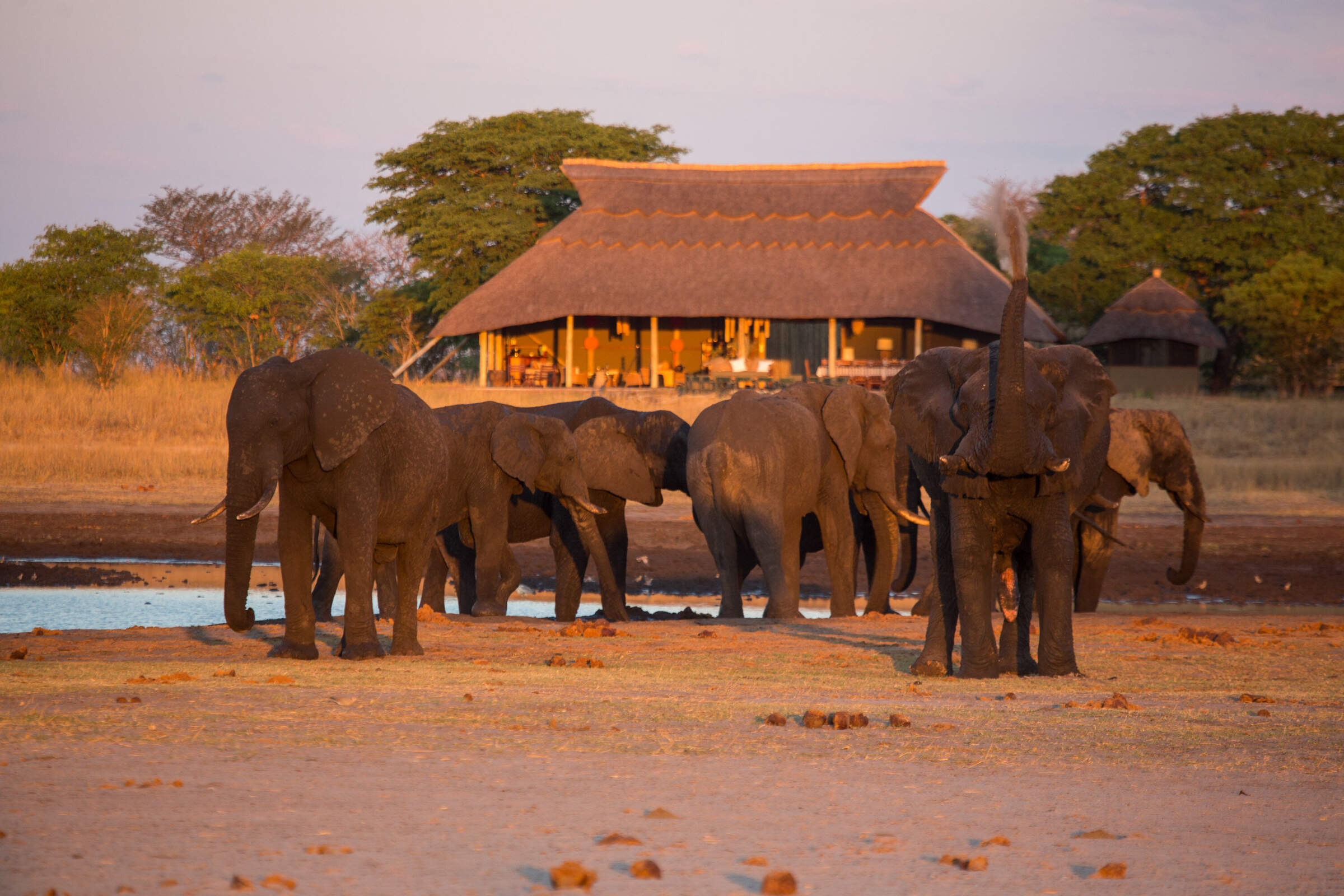
Camp Hwange
Overlooking a waterhole in a remote part of Hwange National Park, Camp Hwange offers great guiding in a pristine wilderness at reasonable prices.
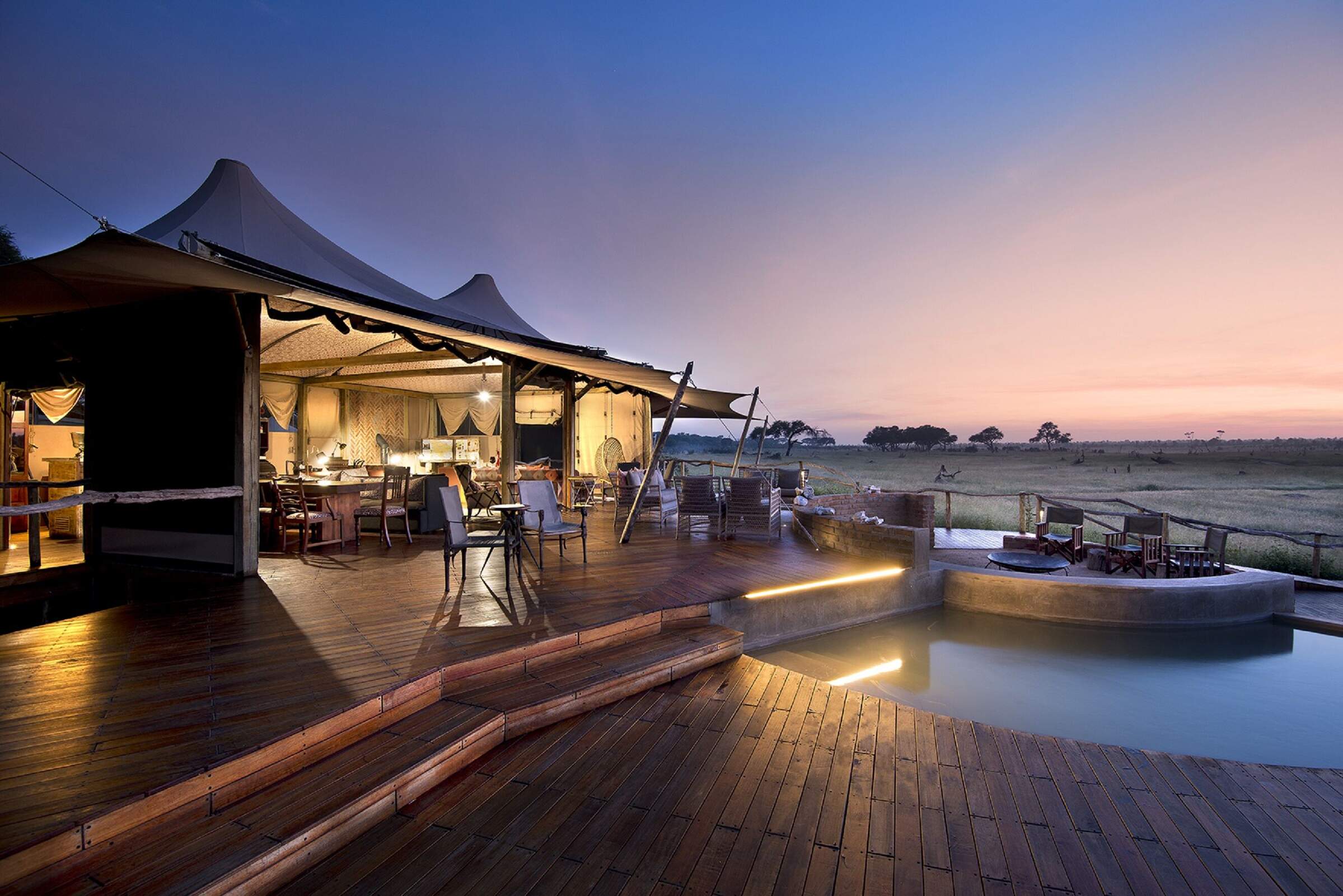
Somalisa Camp
Somalisa is a luxurious, yet remote, safari camp in Hwange National Park, offering walking safaris and game drives.
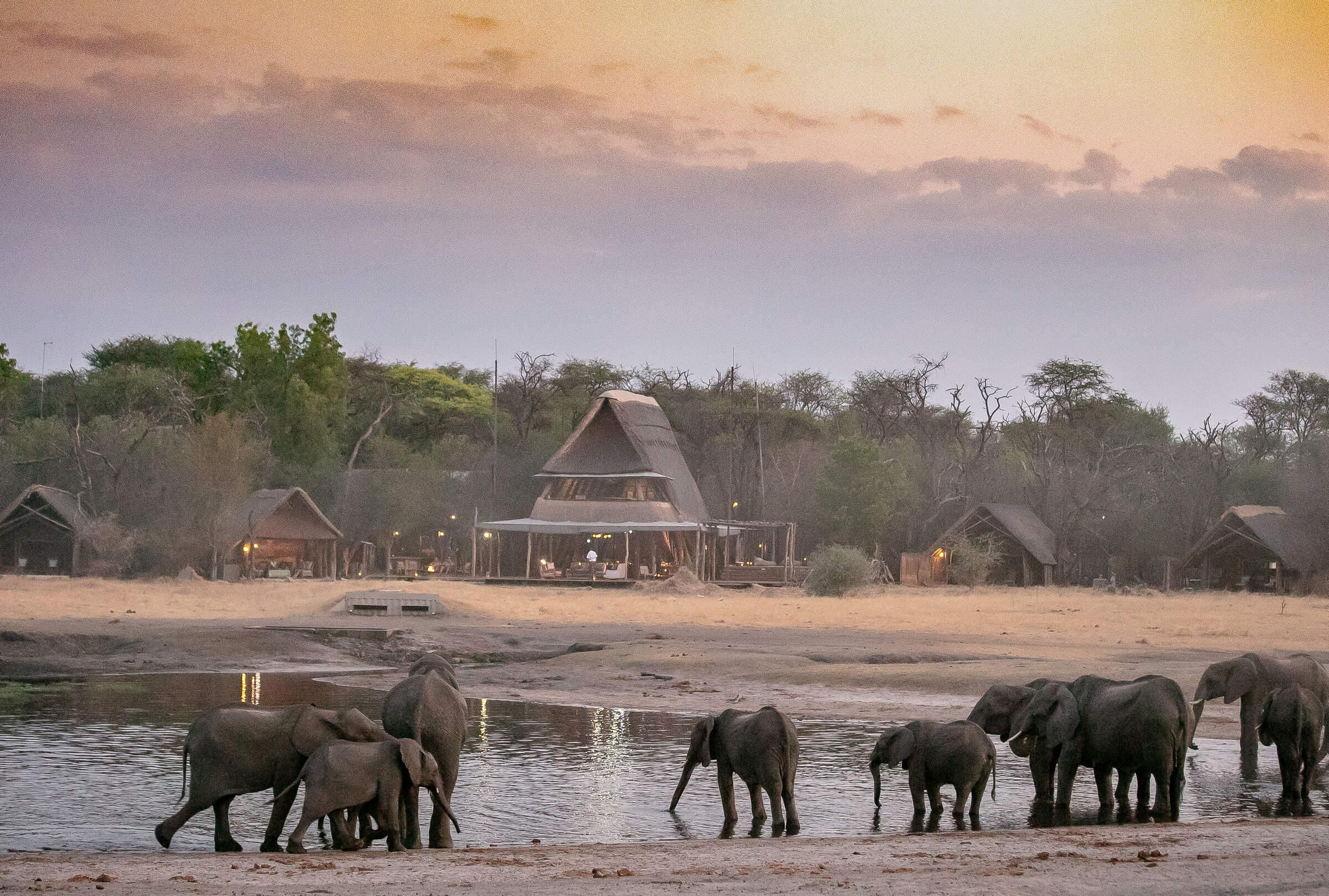
The Hide
Located in a small, private concession, The Hide is a relaxed and comfortable camp offering submerged hides and great family accommodation.
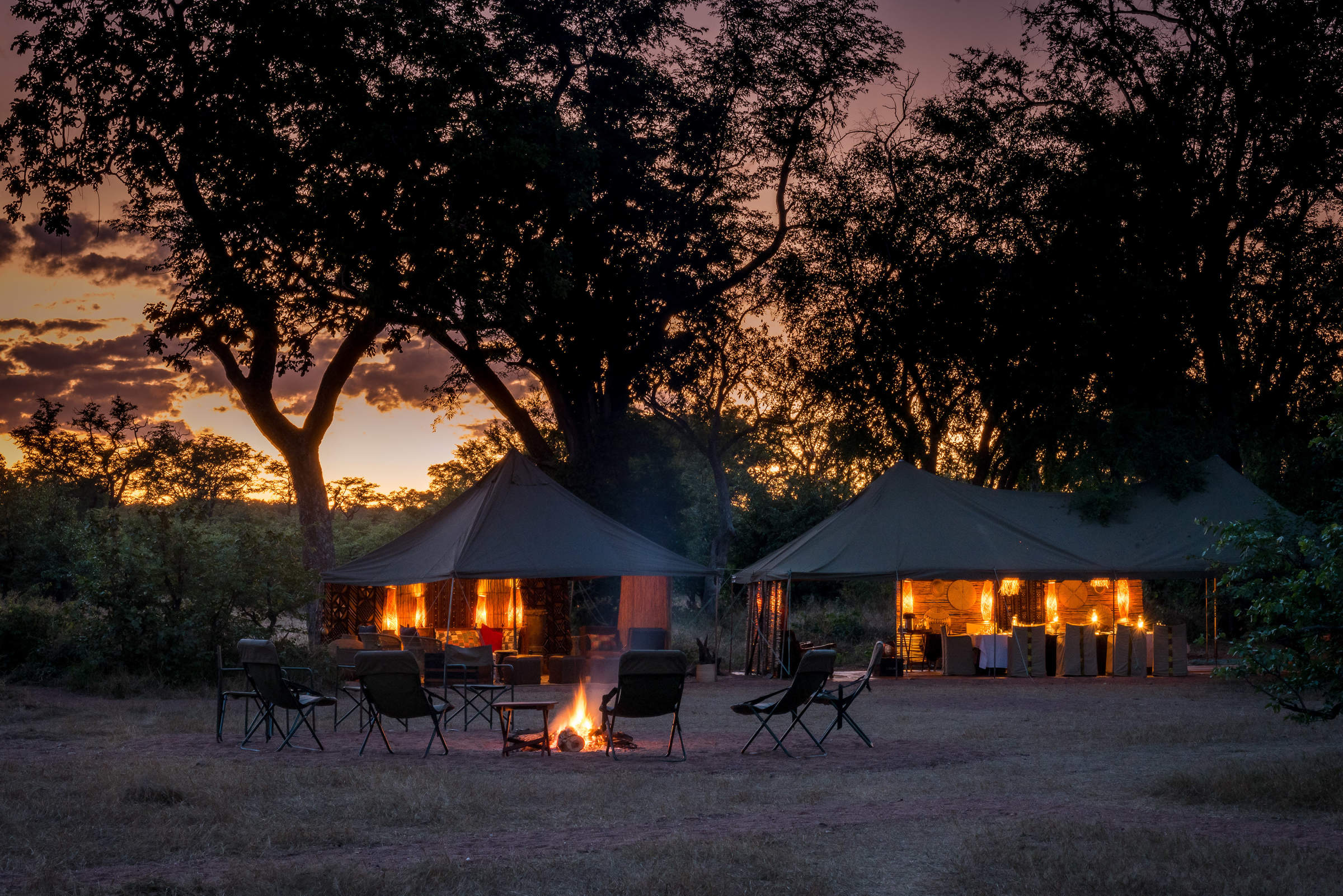
Hwange Bush Camp
Hwange Bush Camp is a small seasonal camp offering comfortable tents, great food, and superb guiding, and is often used by exclusive groups.
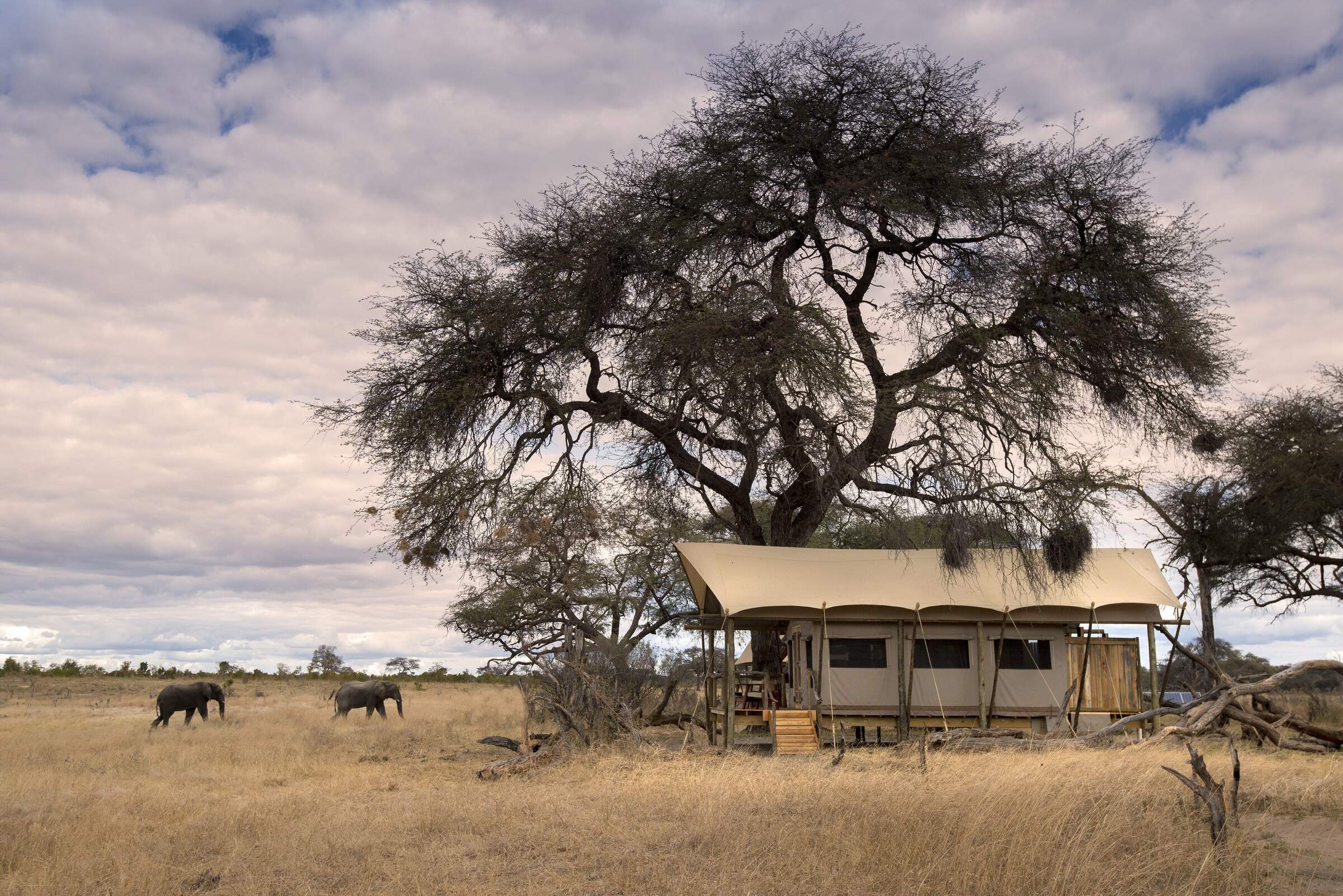
Somalisa Expeditions
A simple but stylish camp, Somalisa Expeditions sits in the heart of Hwange National Park, offering walking safaris and game drives.
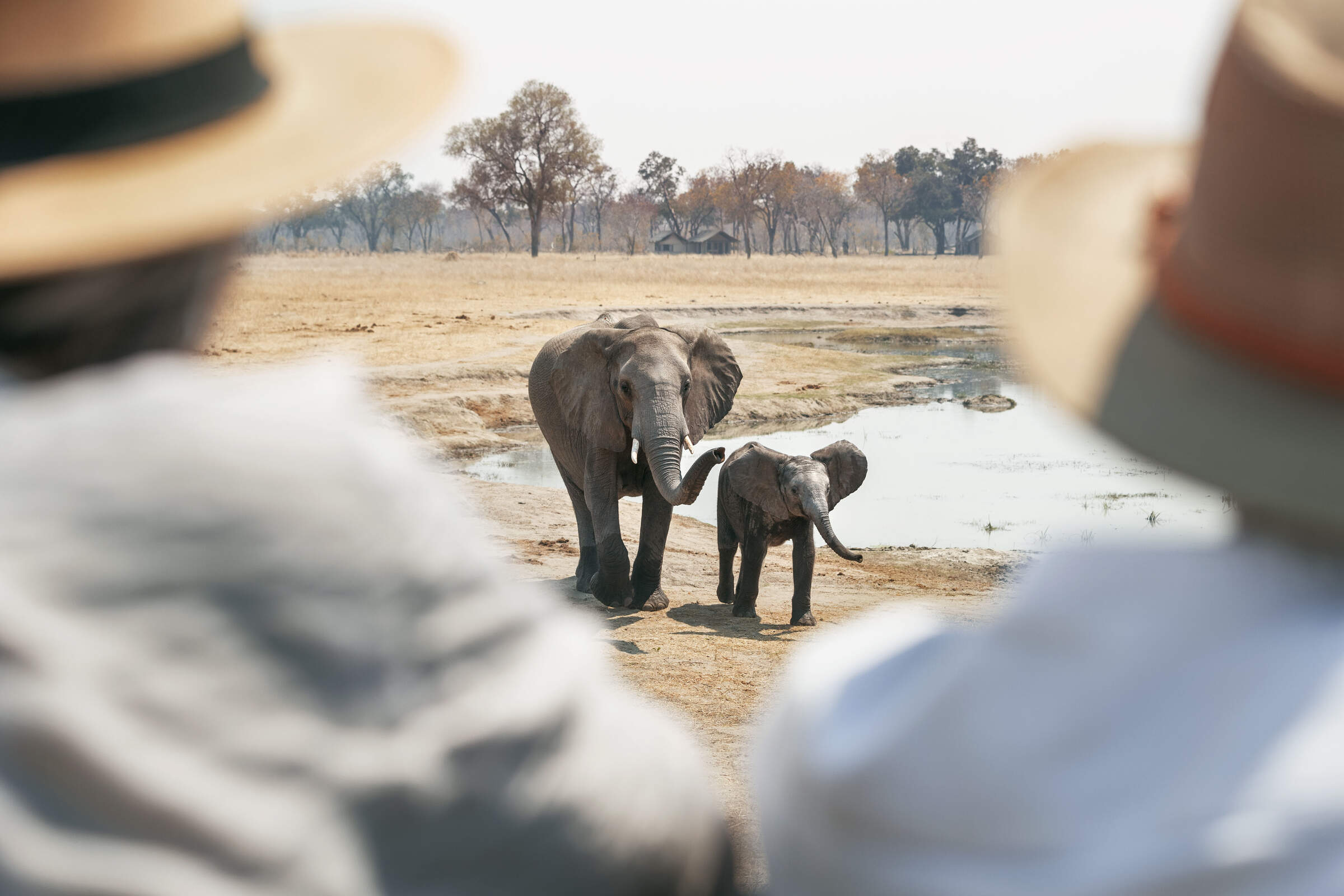
Davison's Camp
Within the Linkwasha Concession, Davison's Camp offers superb value for money, morning walking safaris and spot-lit drives after dark.
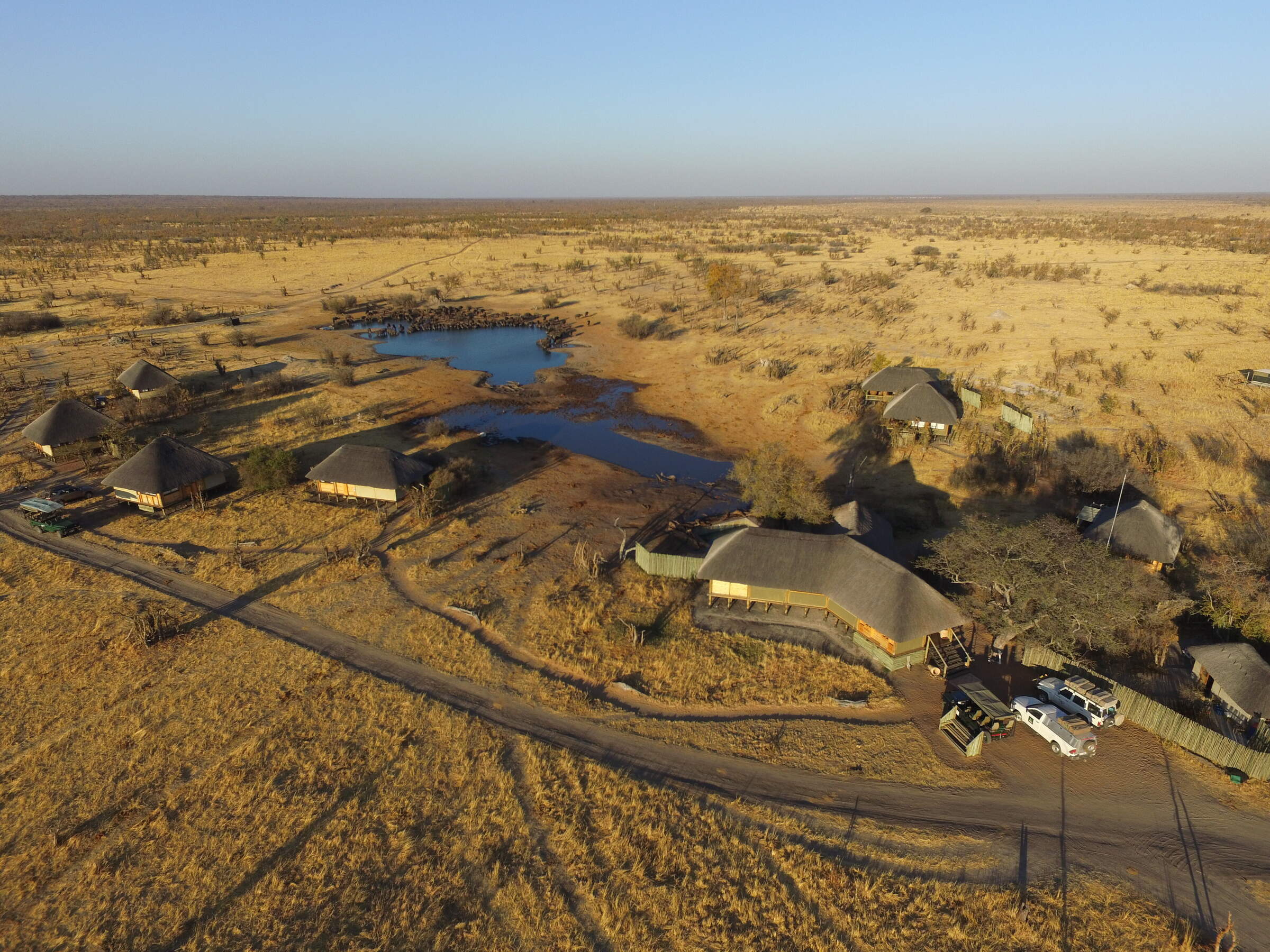
Nehimba Lodge
Nehimba is a comfortable, good-value camp in a remote area of Hwange National Park, teeming with wildlife.
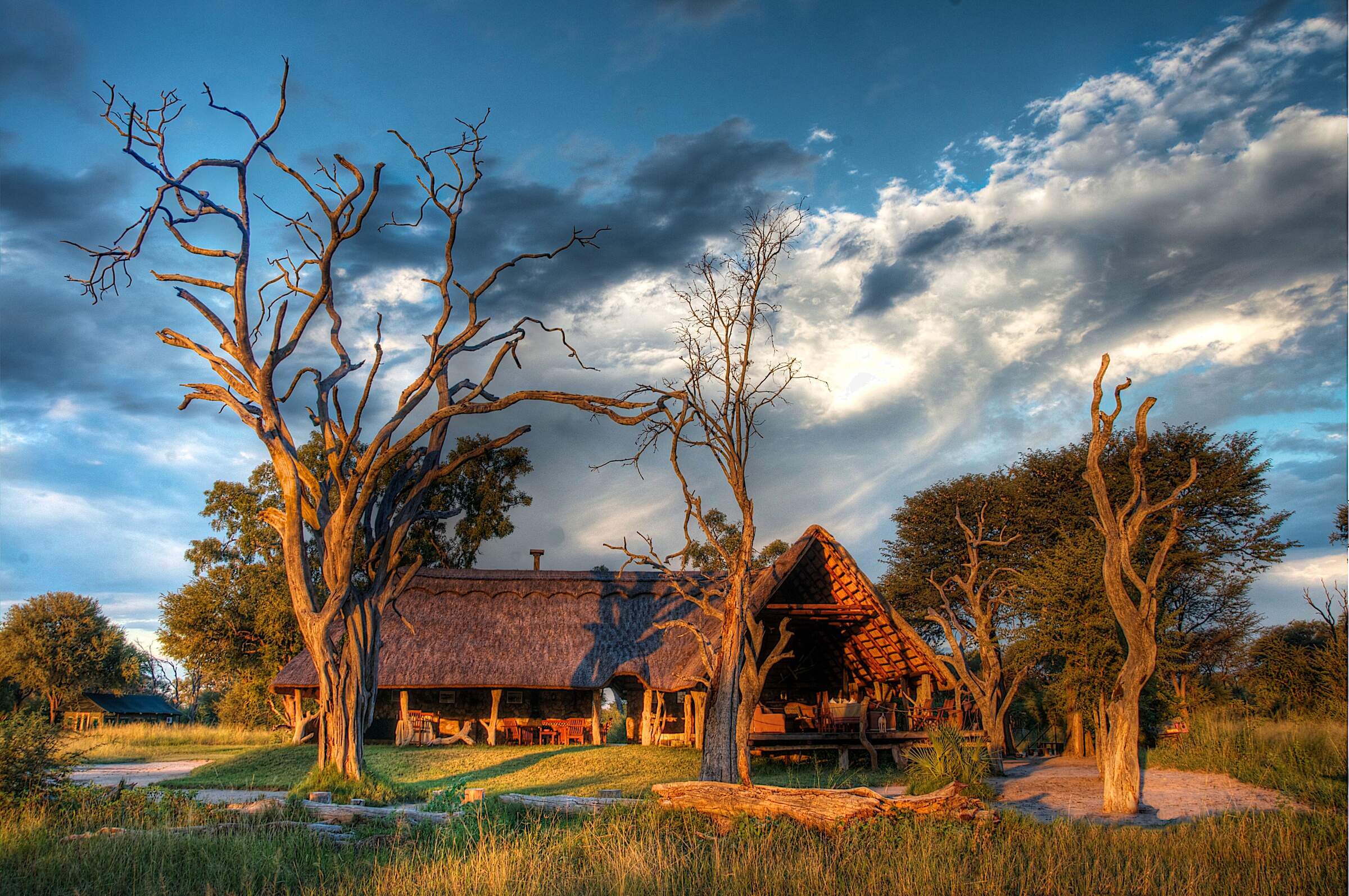
Bomani Tented Lodge
Bomani is a down-to-earth lodge with a range of activities in a remote region of western Zimbabwe, adjacent to Hwange National Park.
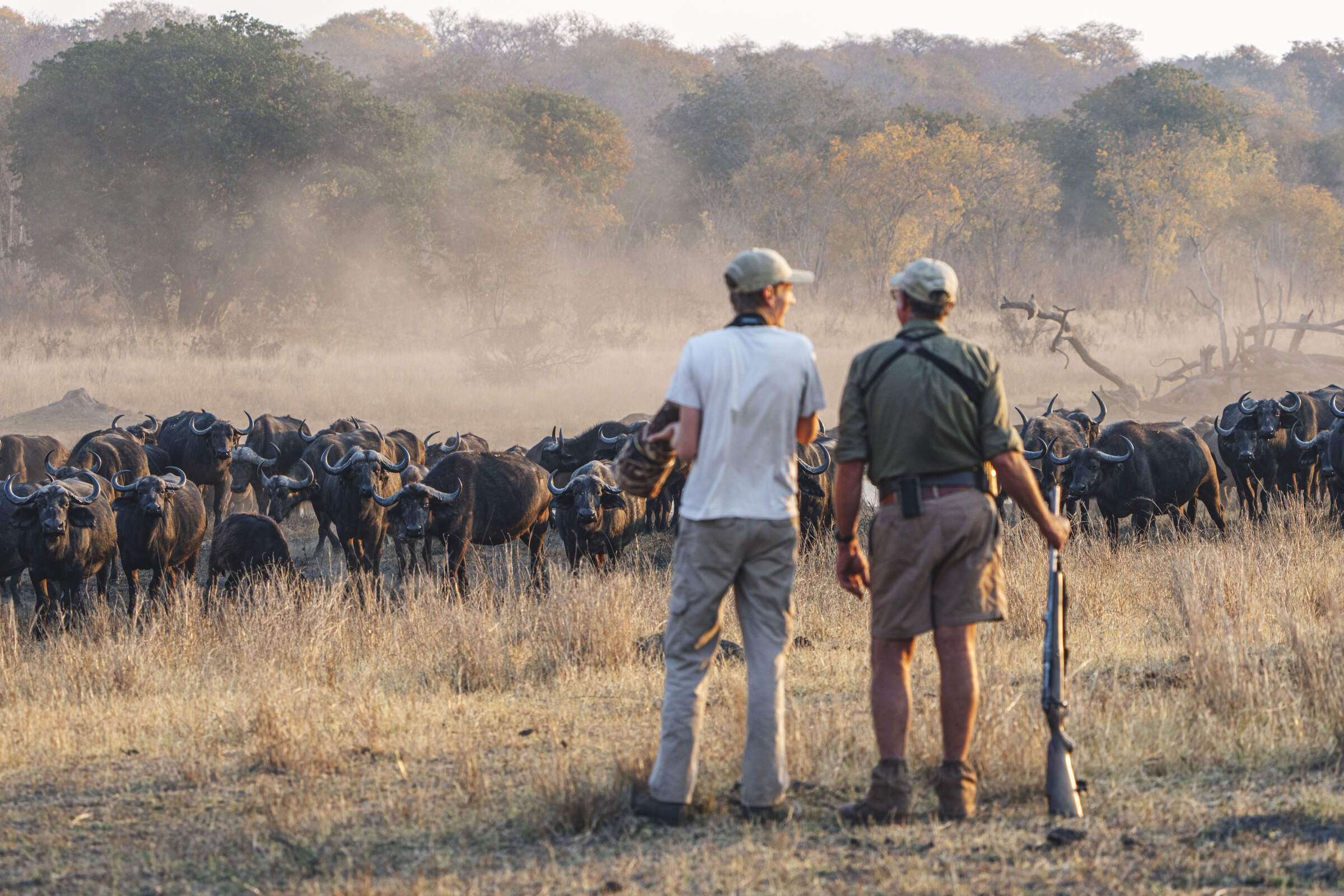
Khulu Bush Camp
Just outside Hwange National Park, Khulu Bush Camp features a waterhole popular with wildlife, especially elephants and offers excellent value for money.
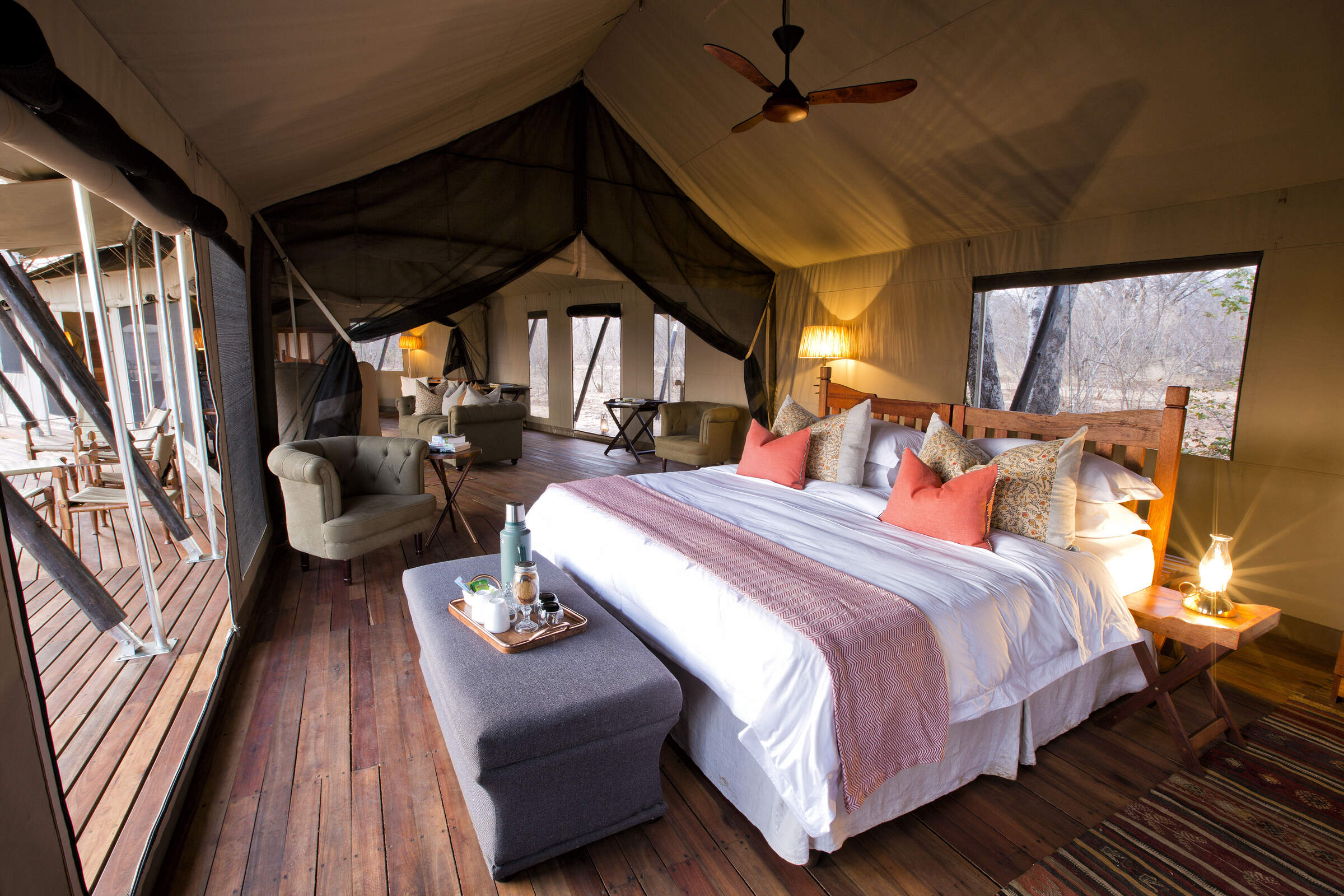
Verney's Camp
Verney's Camp is one of the newest offerings in Hwange, located in the wildlife rich, open landscape in the south-eastern section of the park.
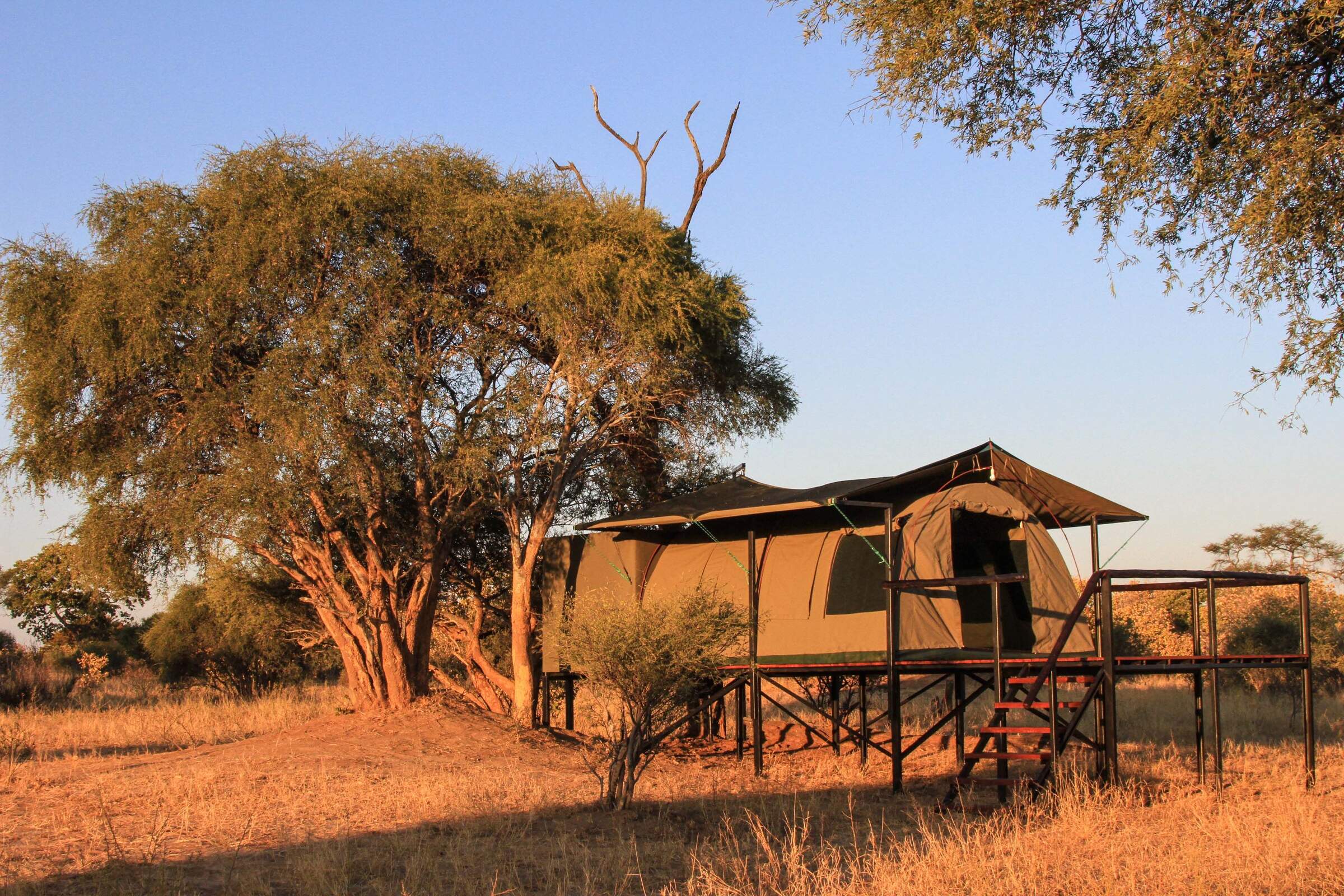
Jozibanini Camp
Remote and rugged, Jozibanini is one of the most remote camps in Zimabwe's largest National Park. Stay here for a real wilderness experience.
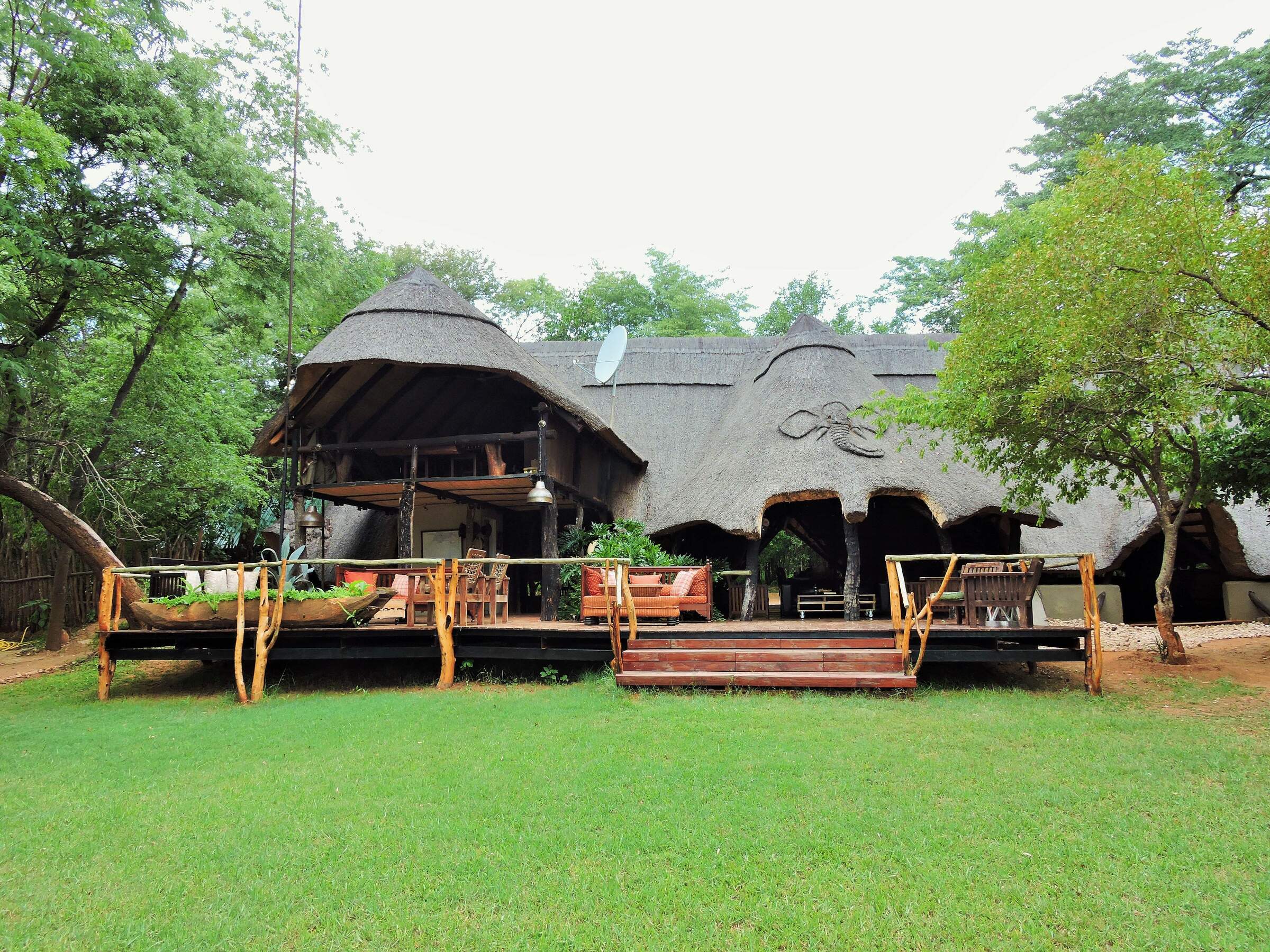
Ivory Lodge
Just outside Hwange National Park, the small Ivory Lodge is a great place to see large herds of elephant as well as smaller plains game.
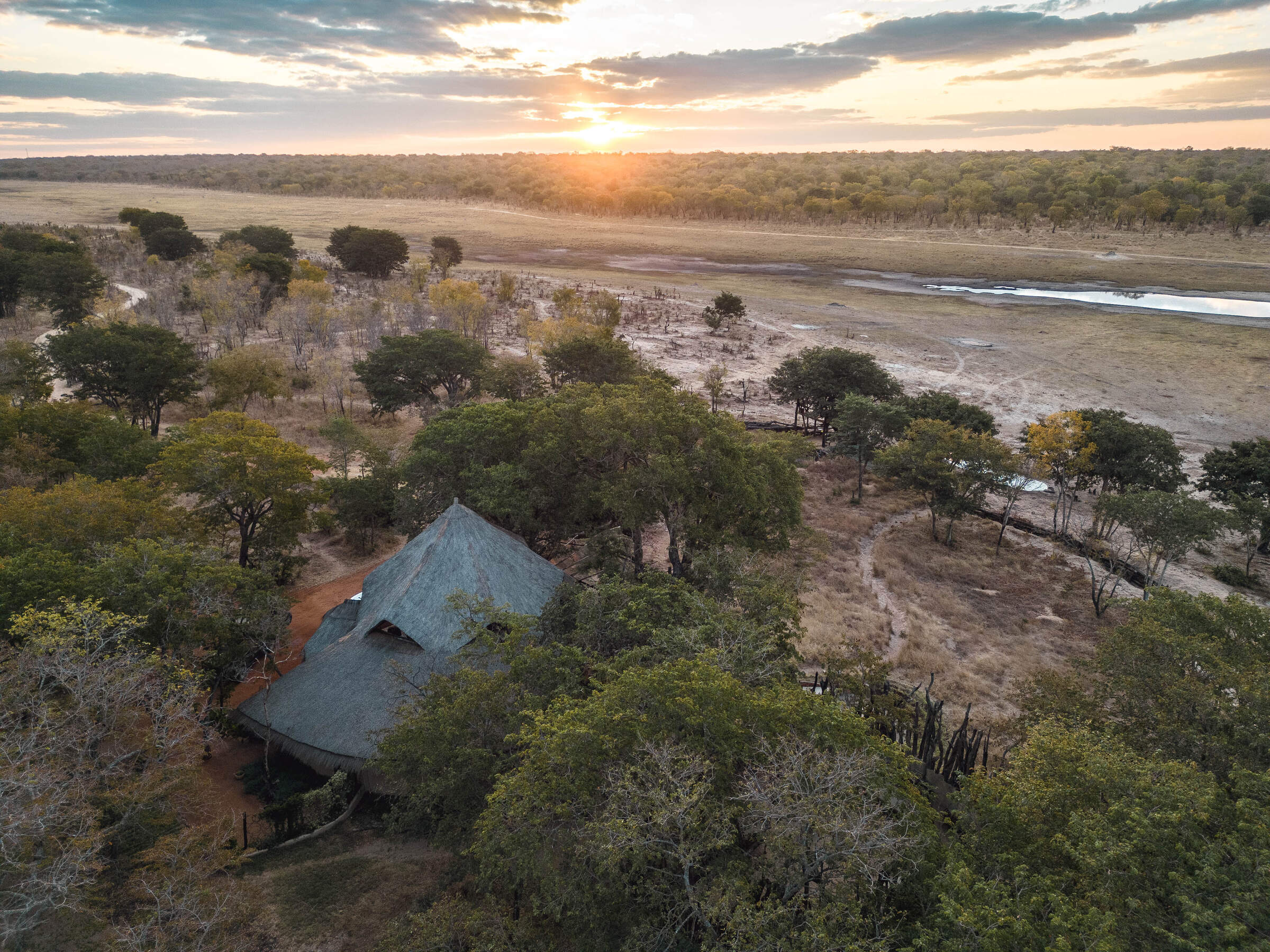
Sable Valley Lodge
Set on the 12km Dete Vlei, the recently upgraded and family-friendly Sable Valley sits in a private reserve within easy reach of Hwange National Park.
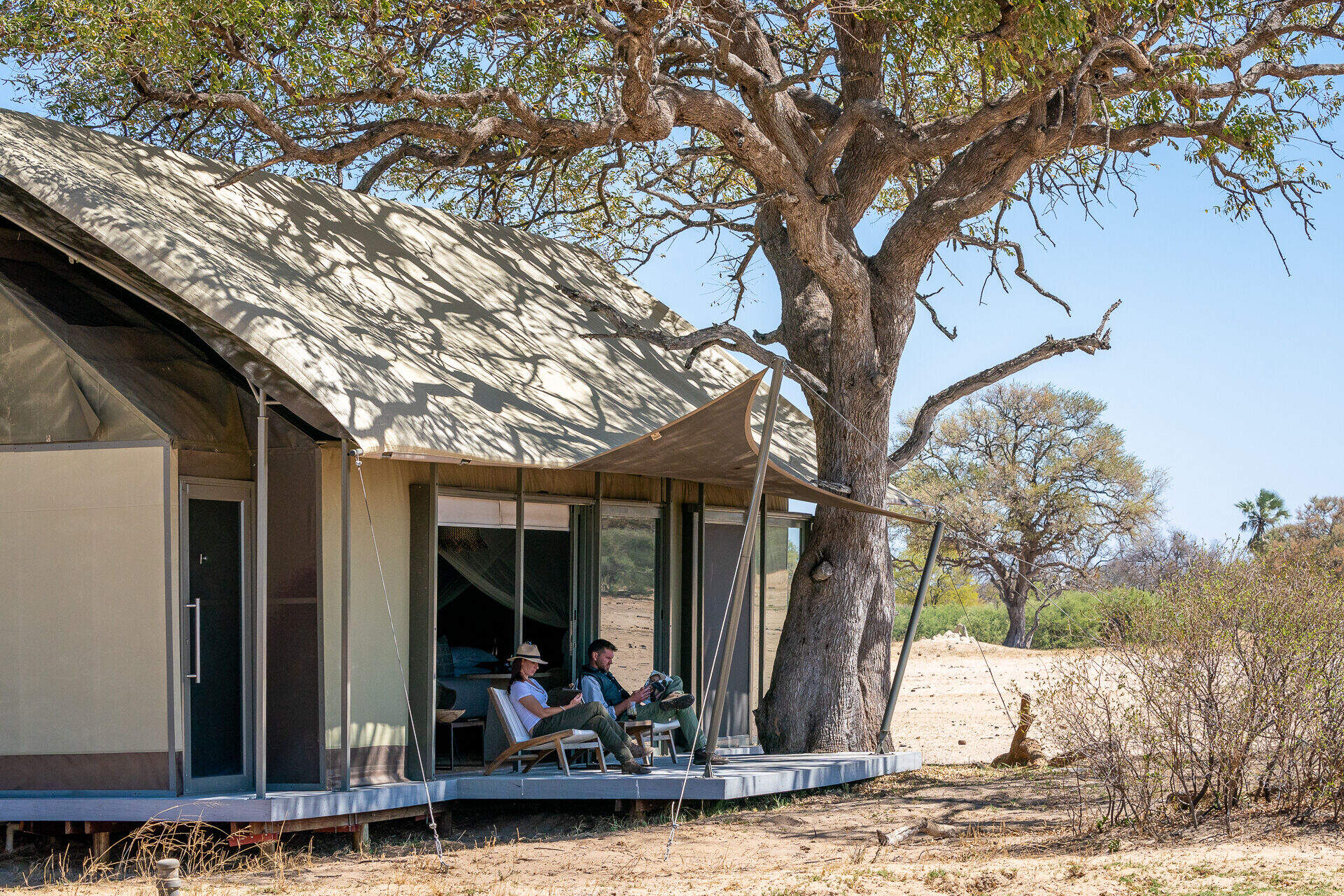
Linkwasha Camp
In its own private concession within Hwange National Park, Linkwasha offers excellent wildlife sightings and luxurious surroundings.
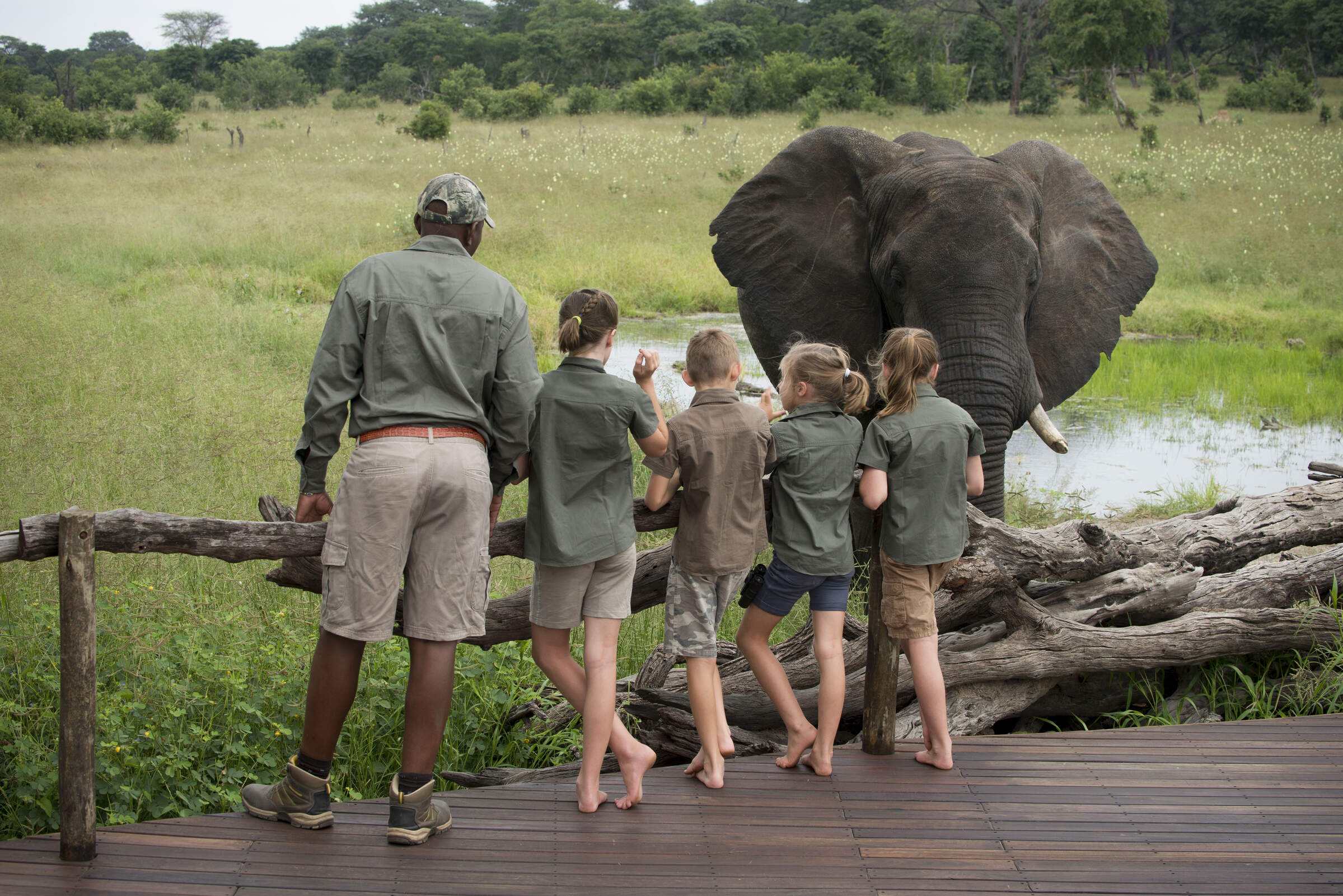
Somalisa Acacia
Somalisa Acacia is a family-friendly, yet remote and luxurious safari camp in Hwange National Park.
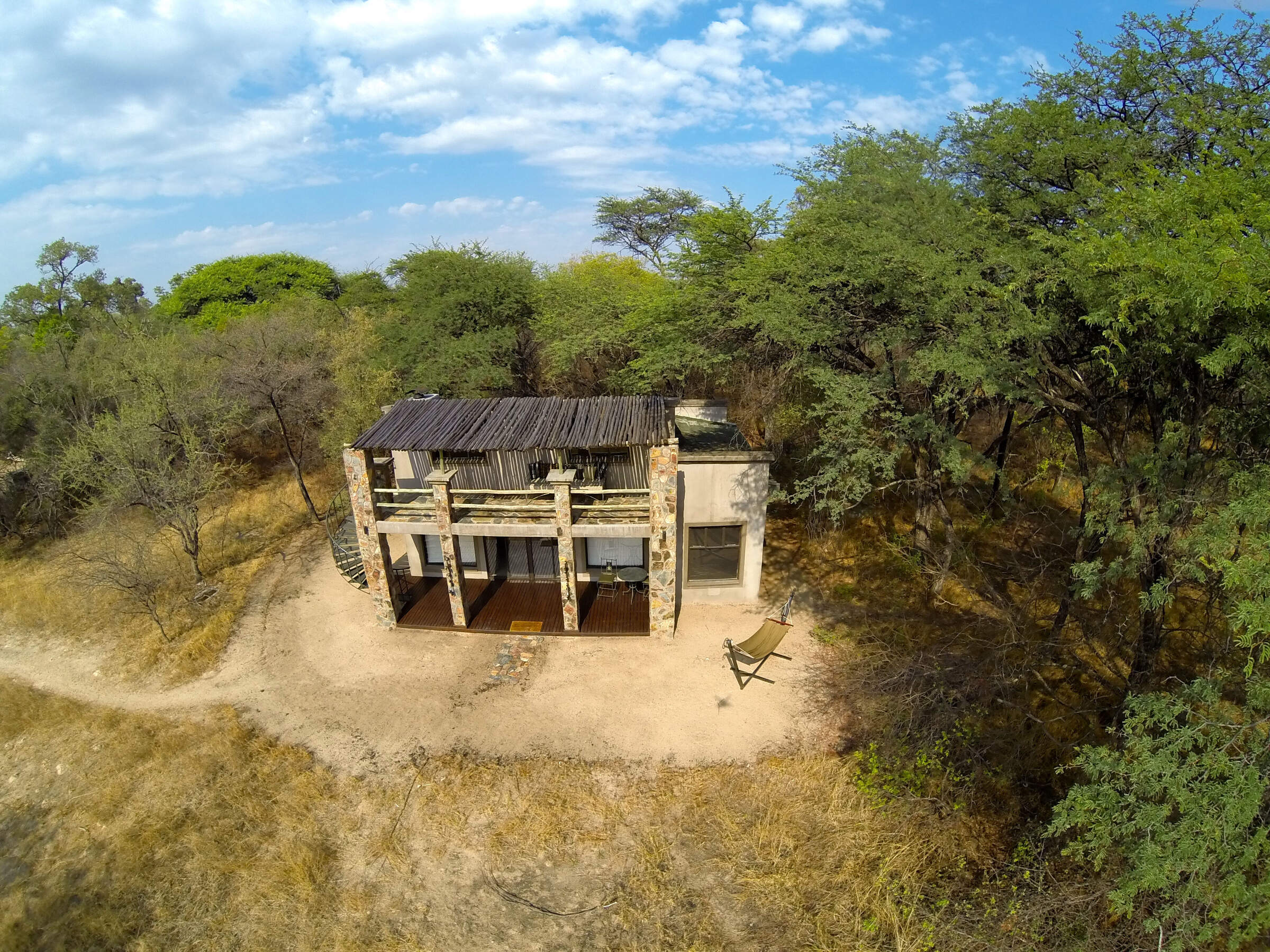
Camelthorn
Camelthorn is a stylish lodge with a range of activities in a remote region of western Zimbabwe, adjacent to Hwange National Park.
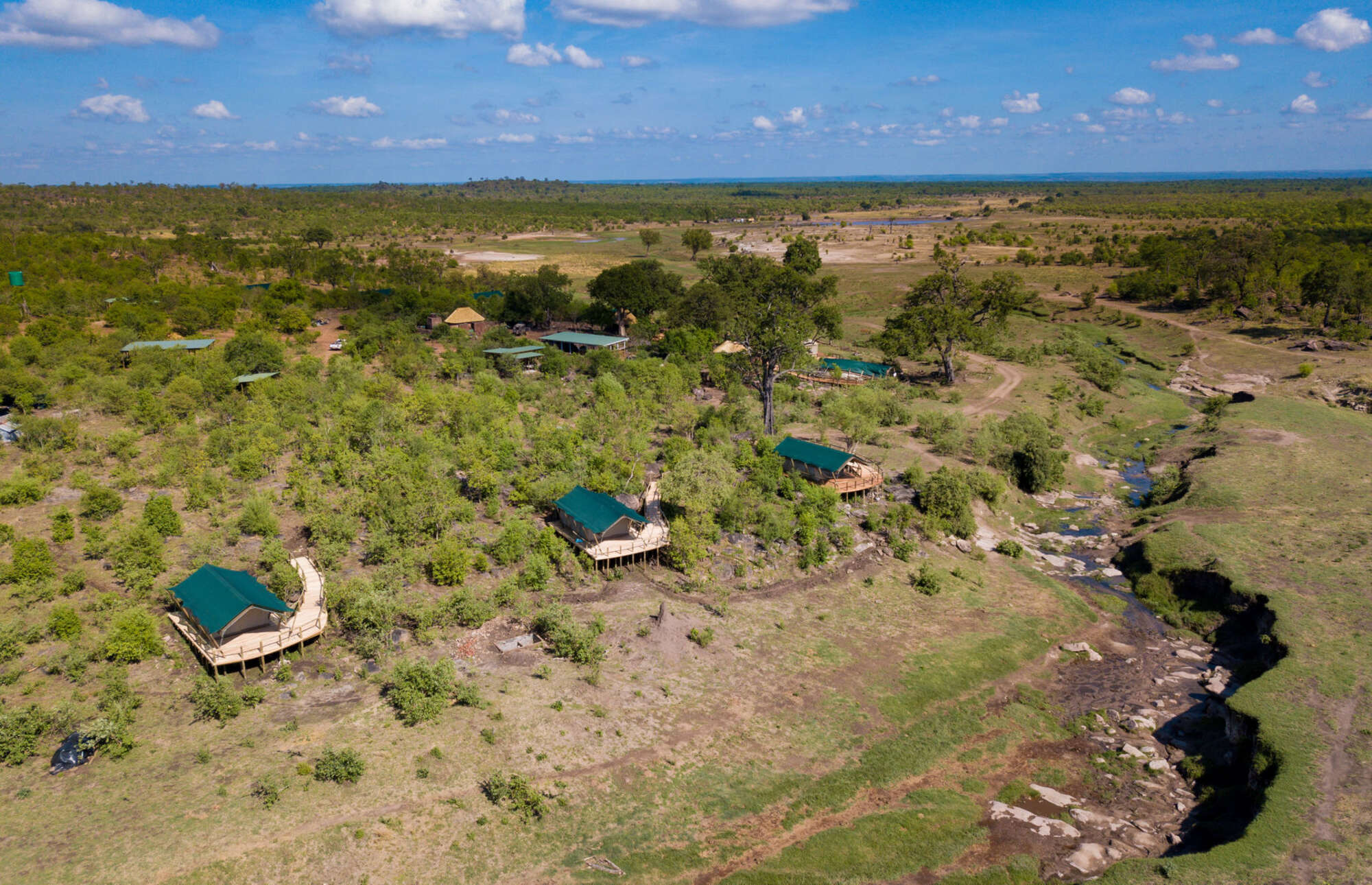
Deteema Springs Camp
Nestled deep in Hwange National Parks rugged northern sector, Deteema Springs Camp promises visitors an authentic bush camp experience.
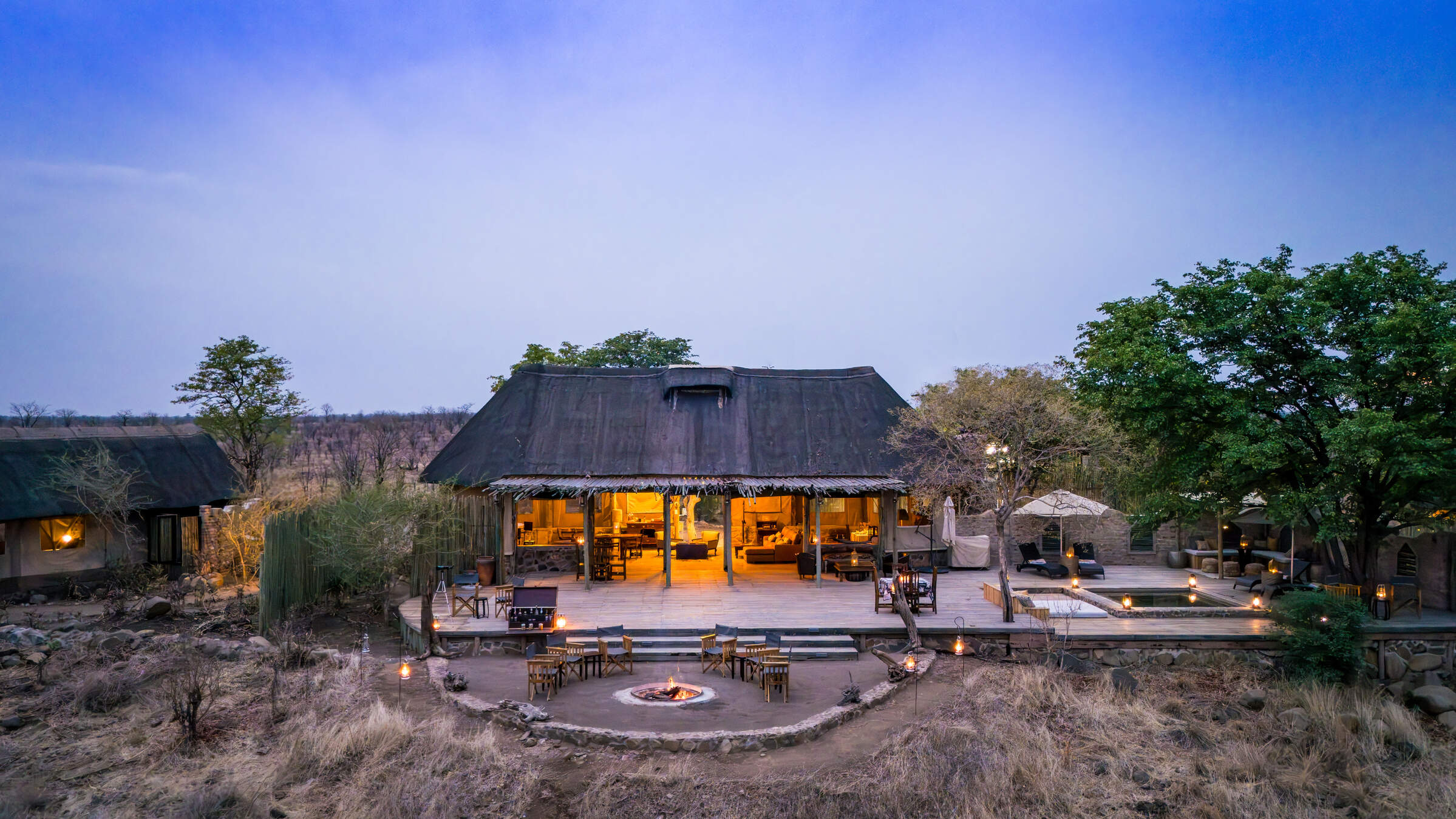
Daka Camp
One of the most remote camps in Hwange National Park, Daka Camp, like the smaller Daka Expeditions, sits almost on the border with Botswana.
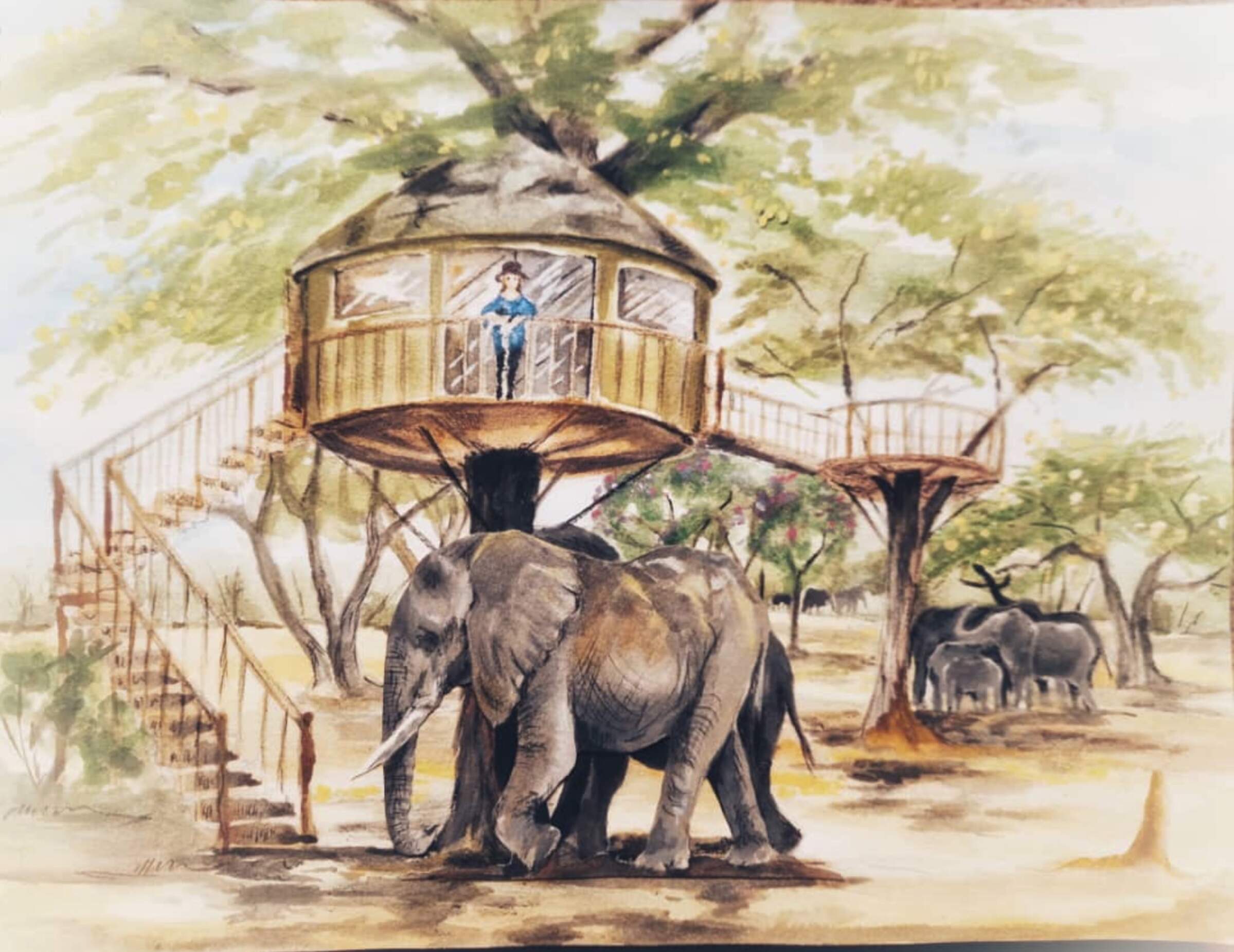
Tum Tum
The Tum Tum Treehouses are due to open in late 2025. Details on this exciting development are still scarce, so watch this space.
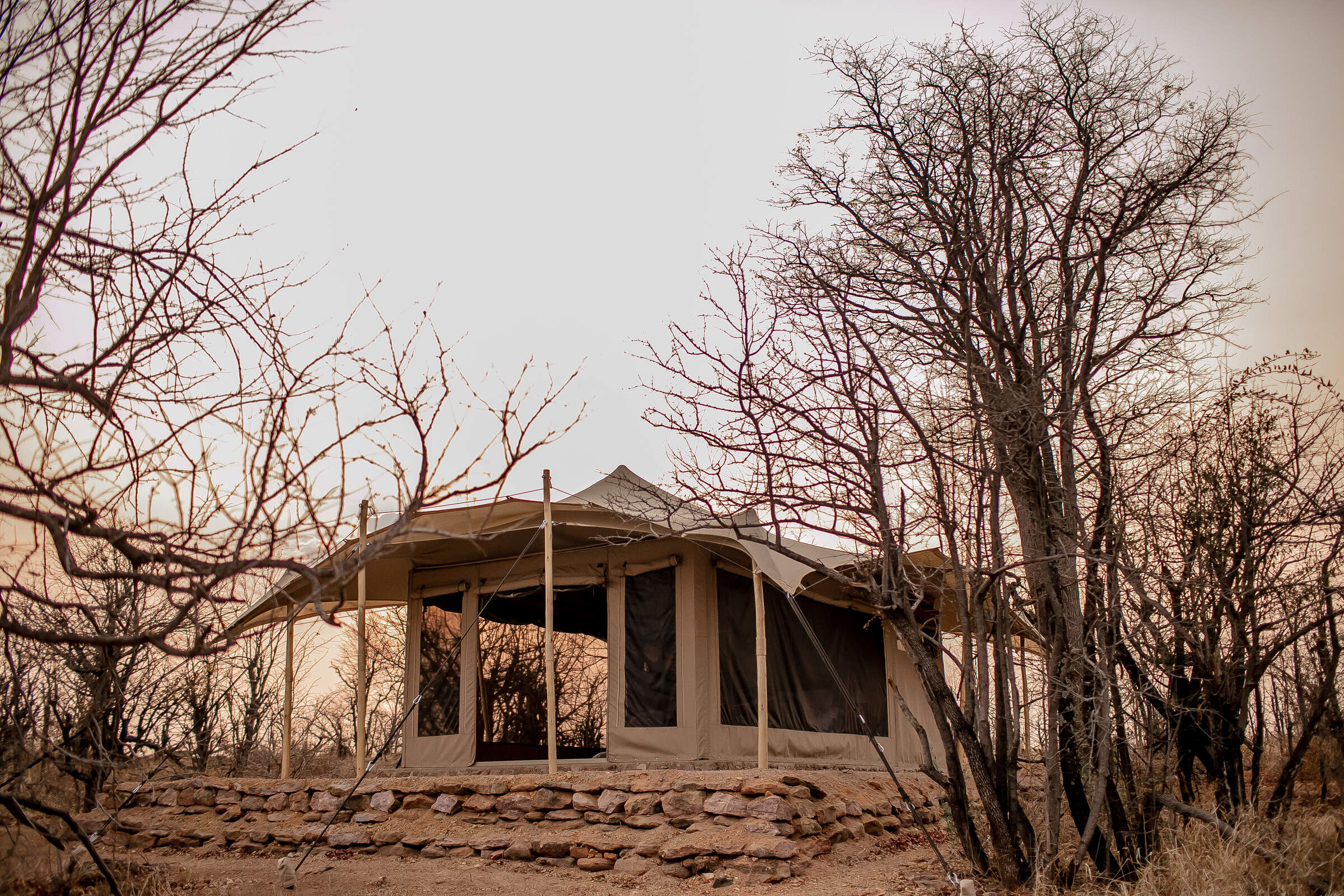
Camp Chitubu
Nestled in the rugged north of Hwange National Park, the unpretentious yet comfortable Camp Chitubu has a strong focus on excellent guiding.
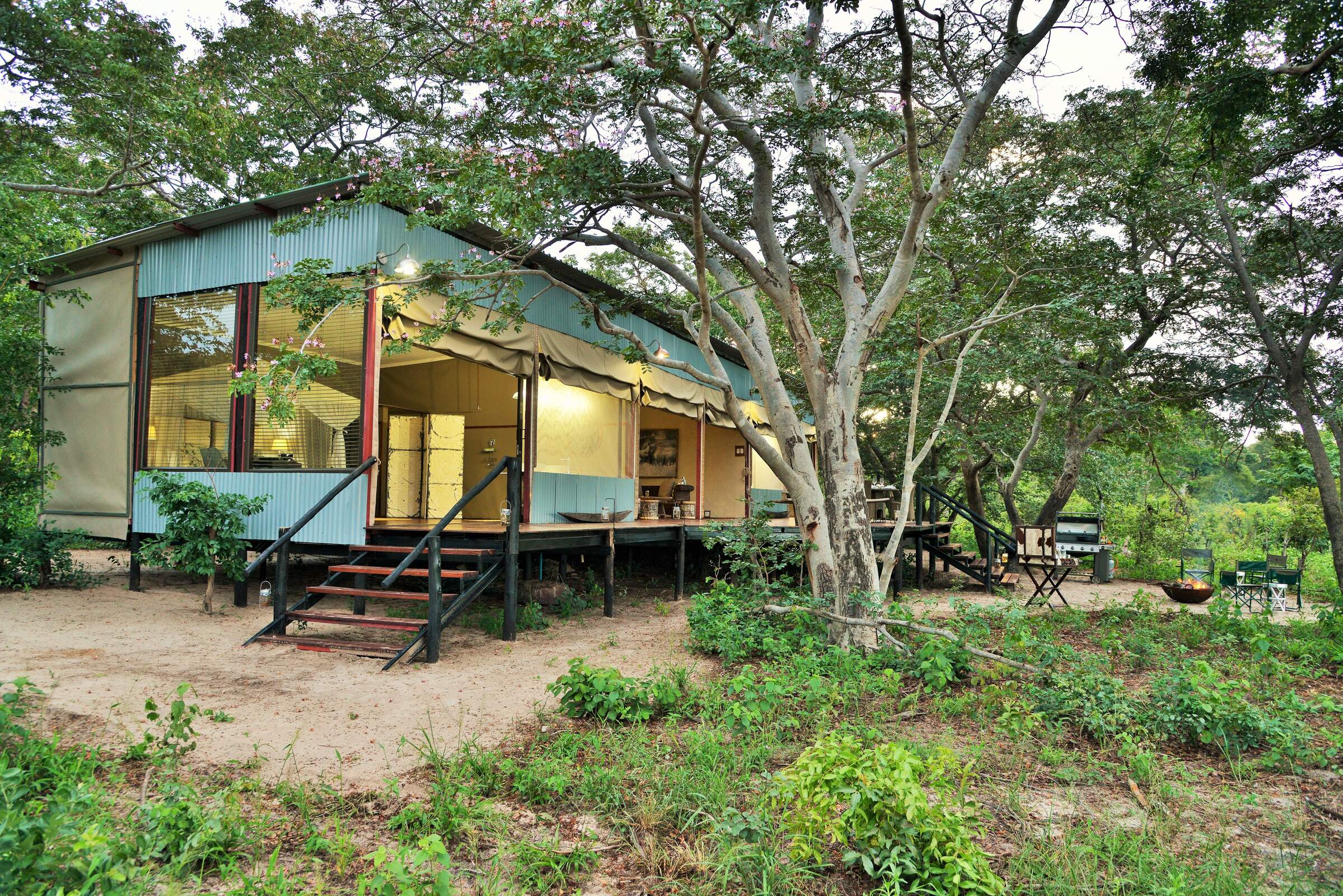
Khulu's Retreat
Just outside Hwange National Park, Khulu's Retreat is an exclusive private villa and is a great place to spoil yourself on a safari in Zimbabwe.
When to go to Hwange National Park
Our month by month guide: What it's like to visit Little Makalolo Camp in Hwange National Park
Jan
Feb
Mar
Apr
May
Jun
Jul
Aug
Sep
Oct
Nov
Dec
Zimbabwe in January
January falls in the middle of Zimbabwe’s rainy season and is the wettest month of the year. Heavy rainfall occurs most days, flooding seasonal rivers and waterholes, with the occasional sunny spell.
With the high levels of precipitation the wildlife in the national parks becomes widely dispersed, taking advantage of the abundance of food and water, and is easily hidden by the thick, green bush.
While sightings of larger animals are possible, and many species drop their young at this time, game viewing is often sparse. However, many migratory species of bird arrive in Zimbabwe making it a peak month for birding.
The rains create incredibly sticky mud in Mana Pools National Park, preventing access and causing camps to close for the season. The majority of the camps in other parks remain open, with low rates attracting a smattering of visitors.
- Peak of the rainy season: hot & humid with heavy rain most days
- Bush exceptionally thick and green, with poor game viewing
- Species such as impala drop their young
- All camps in Mana Pools closed
- Very few visitors, and low rates at open camps
Our view
A time to avoid if possible
Weather in January
Zimbabwe in February
February remains well within Zimbabwe’s rainy season. Although total rainfall drops, relatively short thunderstorms can still be expected most afternoons. On the plus side, there is a greater chance of some sunshine in-between.
Much of the country remains waterlogged, closing access to Mana Pools and severely restricting walking safaris in other parks. While game drives and canoeing remain an option, the abundance of water disperses animals, and thick grass can make it difficult to spot larger species, but birding remains excellent. Conversely, this is a great time of year to view the landscape, and is excellent for photographers. Sporadic cloud cover and clear air can make for some spectacular sunsets too, particularly over Lake Kariba and the Zambezi River where the reflections off the water add to the beauty.
- Generally wet with frequent thunderstorms & hot humid days
- Poor wildlife viewing due to dispersed animals & thick bush
- Clear air, green landscapes & exceptional sunsets
- All camps in Mana Pools closed
- Very few visitors & low rates at camps that are open
Our view
This is not a great time to visit
Weather in February
Zimbabwe in March
March is the final month of Zimbabwe’s rainy season, when the rains start to trail off and sunny days become the norm. However, some days the clouds can still build, breaking into thunderstorms in the afternoon.
Mana Pools remains closed throughout the month but the majority of camps in Hwange, Matusadona and Gonarezhou remain open. Here, the landscape is green and alive, with migrant species of birds taking advantage of the abundant insect life. Larger animals remain elusive though, and walking safaris remain restricted.
By this time of year, the rains have normally trickled down to the Zambezi River and the flow of water over the Victoria Falls starts to increase, but without kicking up too much spray to obscure the views.
- Last month of the rainy season: hot, humid days with occasional storms
- Lush vegetation means good birding, but poor game viewing
- Views of the Victoria Falls improve
- All camps in Mana Pools closed
- Open camps have few visitors & low rates
Our view
This is not a great time to visit
Weather in March
Zimbabwe in April
April marks the end of Zimbabwe’s rainy season and the end of summer. Clear skies are the norm, with just the occasional shower. Temperatures start to drop, failing to reach 30ºC most days and dropping down to around 10ºC at night.
As the rain fades the landscape starts to dry out. While the vegetation remains thick and green, the soil in Mana Pools dries enough for camps to open, and the only camps to remain closed are the most remote bushcamps in Hwange. Although viewing of larger animals remains tricky, the improved weather starts to draw back visitors, as do prices significantly below those in the peak season.
The Zambezi River and flow of water over the Victoria Falls is at its highest, although large amounts of spray diminish views of the waterfall itself.
- Transitional period, with much lower rainfall & falling temperatures
- Wildlife is still dispersed & hard to see, but sightings improving
- Views of the Victoria Falls often obscured by spray
- Camps in Mana Pools open
- Visitors start to return & camps increase their rates
Our view
A good time to visit, with pros & cons
Weather in April
Zimbabwe in May
The first month in the dry season, May is also Zimbabwe’s first month of winter. If the rains are particularly late in a given year, you may catch the odd shower, but you can expect clear and sunny days the majority of the time. While it’s warm in the daytime, temperatures drop to single digits at night, so bring a warm jumper and gloves for early morning drives.
With the rain having cleared the air, the sky is bright blue, and it’s the best time of year for photography.
Even the most remote camps in Zimbabwe are now open. With the lack of rainfall, vegetation dies back significantly, and seasonal rivers return to sand. Not only does this open up the possibility of walking safaris, but wildlife viewing becomes much more reliable.
- Start of the dry season, with milder days and cold nights
- Game viewing significantly improves as vegetation dies back
- Vegetation starts to turn from green to brown
- Best time for photography with crystal clear air
- Visitors start to return; all camps open & rates increasing
Our view
A very good time to visit
Weather in May
Zimbabwe in June
During June you can virtually be guaranteed of dry and sunny days, although temperatures continue to drop, and can get close to freezing at night in Hwange National Park. Jumpers, jackets and gloves are strongly recommended for early mornings and evenings.
The opportunities for wildlife viewing improve throughout the month as the landscape rapidly dries, and the animals start to gather on the banks of the Zambezi River and around Hwange’s waterholes.
Water levels in the Zambezi River start to drop, reducing the amount of spray kicked up at the Victoria Falls and greatly improving visibility, but still allowing a full curtain of water to cascade over the edge.
- Middle of winter, with night-time temperatures close to freezing
- Game viewing significantly improves throughout the month
- Views of the Victoria Falls are at their best
- Noticeable increase in visitor numbers
- Camps considerably more expensive
Our view
A very good time to visit
Weather in June
Zimbabwe in July
July sits in the middle of Zimbabwe’s dry season. Although it’s warm at midday, temperatures are generally cold and in Hwange it’s been known to drop below freezing at night, with the lower-altitude Mana Pools feeling a bit warmer.
With wildlife clustering around the few remaining waterholes, sparse vegetation, and some of the best views of the Victoria Falls, this is one of the most popular times to travel, with camps charging peak season rates to reflect this. That said, visitor numbers to the country in general remain low, and outside of the Victoria Falls it’s rare for any areas to feel crowded.
- Middle of the dry season with almost no chance of rain
- Clear sunny days, but very cold nights
- Wildlife viewing good; game drives and walking safaris unrestricted
- Views of the Victoria Falls at their best
- Camps charging peak season rates
Our view
A very good time to visit
Weather in July
Zimbabwe in August
While August is the end of winter and temperatures are starting to creep up, mornings and nights are still cold, and game drives in open vehicles can feel particularly chilly. Well into the dry season, the landscapes will have mostly transformed from green to brown and wildlife viewing in Zimbabwe’s national parks is approaching its best. Due to dust kicked up into the atmosphere and smoke from bush fires you may start to notice a haze on the horizon, but this doesn’t significantly impact photography.
August is one of the most expensive months, and the pleasant weather and decent game viewing attracts lots of visitors. While the national parks rarely feel crowded, Victoria Falls accommodation can sell out a year in advance.
- Warm, sunny days but cold mornings & nights; almost no chance of rain
- Wildlife viewing nearly at its best
- Landscape turns brown, & an atmospheric haze develops
- All camps charging peak season rates
Our view
Fantastic: the very best time to visit
Weather in August
Zimbabwe in September
Temperatures in September rarely drop below 15ºC, but are yet to reach the oppressive highs of summer. It will normally have been five months since the last drop of rain, so antelope and elephants cluster around whatever water remains, with predators never too far away.
The landscape is very brown, and the haze building on the horizon takes some of the colour out of the sky, so while animal subjects are plentiful, the background is not ideal for photography.
The combination of incredible wildlife viewing, hot and sunny weather, and cheaper flights outside of the school holidays make this the most popular time of year to travel, and availability at the camps can become limited up to a year in advance.
- The best month for weather, with a pleasantly warm temperature range
- One of the best months for game viewing
- Victoria Falls starting to dry but still impressive on Zimbabwean side
- All camps are charging peak season rates
- Most popular time to travel, & space can be limited
Our view
Fantastic: the very best time to visit
Weather in September
Zimbabwe in October
October is the last month of the dry season with little chance of rain but building humidity. While the higher elevation of Hwange National Park limits temperatures to the 30s Celsius, they can easily top 40ºC in Mana Pools.
With little vegetation or water, wildlife is drawn to the few remaining water sources and viewing is at its best; visitors who brave the heat can be rewarded with some exceptional sightings, although haze in the air diminishes photos. Maximum visibility and dense wildlife concentrations can also make for very rewarding walking safaris, although the heat can make them uncomfortable.
Water levels in the Zambezi at the Victoria Falls drop significantly, and large stretches of the waterfall are a dry cliff-face – although it never dries completely. Camp rates remain at their peak, but visitor numbers drop as people avoid the heat.
- Last month of the dry season; very hot with building humidity
- Wildlife viewing at its very best
- Dust & smoke in the air diminish photographic opportunities
- Victoria Falls starting to look very dry
- Camp rates remain at their peak
Our view
A very good time to visit
Weather in October
Zimbabwe in November
November is a transitionary period, with high temperatures and humidity. While they can’t be predicted with any precision, the first rains normally arrive halfway through the month, in the form of thunderstorms lasting a few hours each day.
Early November is a popular time to travel as the camps drop their rates, so if you’re lucky you can get peak-season game viewing at low-season rates. This is a gamble though as if the rains do arrive, animals are no longer limited to a few dangerous waterholes and will disperse into the bush. While all the camps in Mana Pools intend to remain open, the rains can make the airstrips unusable so you may find yourself moved to a different park, a risk that increases through the month.
- Typically the start of the rains in Zimbabwe
- Temperatures & humidity levels remain high
- Wildlife viewing rapidly diminishes as the rains arrive
- Camps remain open, but risk early closure in Mana Pools
- Much cheaper time to travel as camps drop their rates
Our view
A good time to visit, with pros & cons
Weather in November
Zimbabwe in December
By December the rainy season has begun in earnest; this is one of the wettest months in Zimbabwe, with heavy thunderstorms most afternoons and occasionally continuous rain for a couple of days. While temperatures start to cool down the high levels of humidity can make the heat feel more oppressive.
With the rains comes an explosion of green growth, and the dust and smoke are washed out of the air. The resulting scenery – with the occasional bright blue skies – can be fantastic for photographers. Thick vegetation and plentiful water makes viewing of larger animals tricky, but with migratory species arriving the birding is at its best.
All camps in Mana Pools and the remote Hwange camps close, with those remaining open charging their lowest rates.
- One of the wettest months in Zimbabwe
- High temperatures & levels of humidity
- Wildlife viewing poor, but birding good
- Lush green landscapes & clear air; great for landscape photography
- All camps in Mana Pools closed
Our view
This is not a great time to visit
Weather in December

Looking for inspiration on where to travel next?
Visit our trip chooser to explore your options and find inspiration for your perfect African adventure
Inspire me